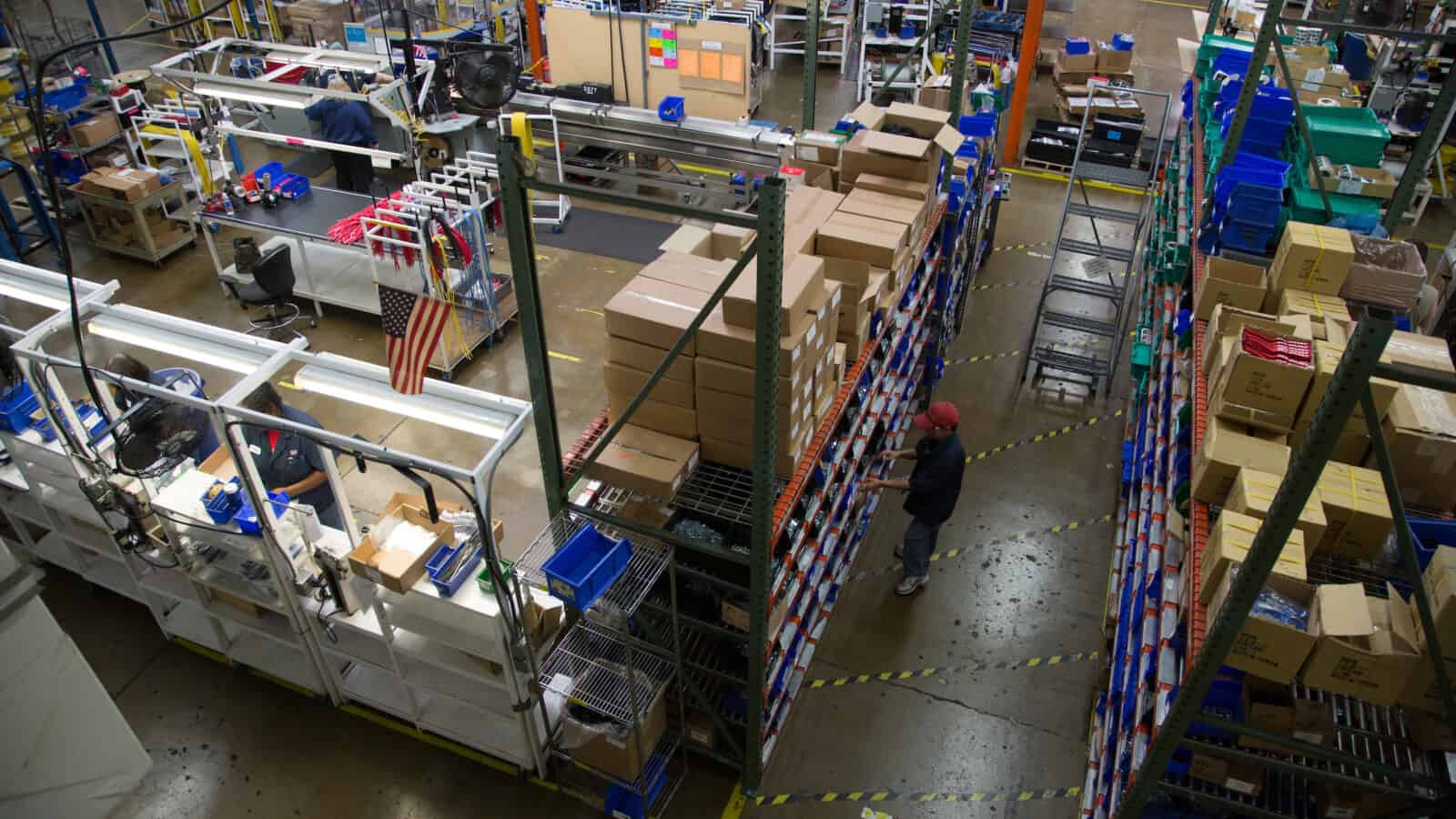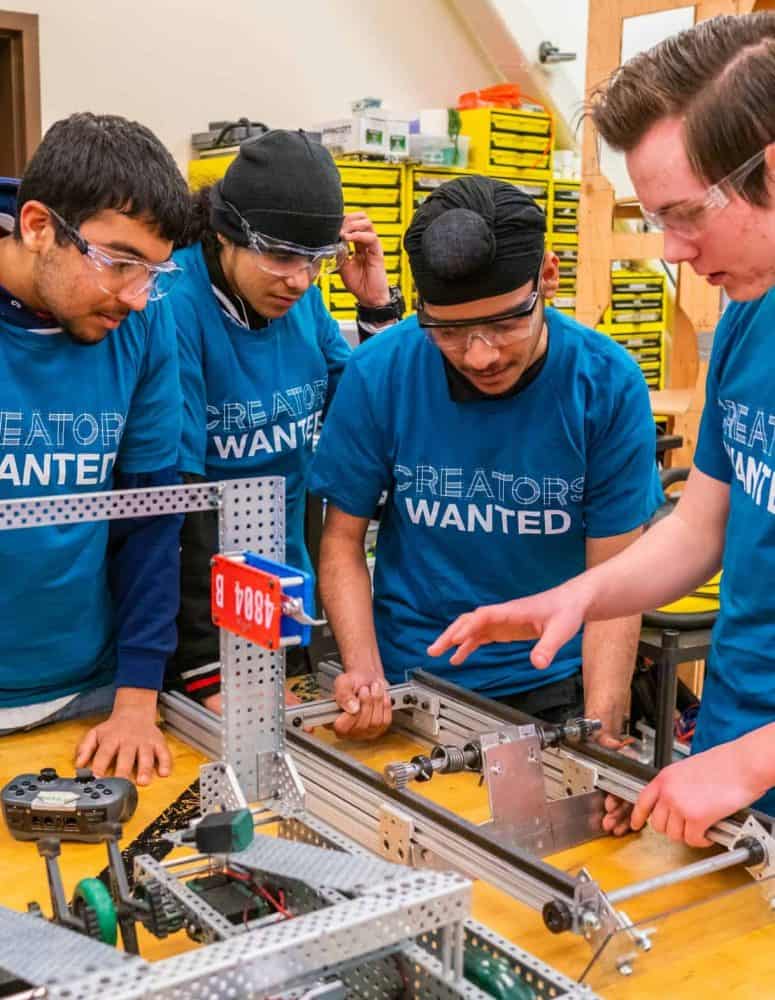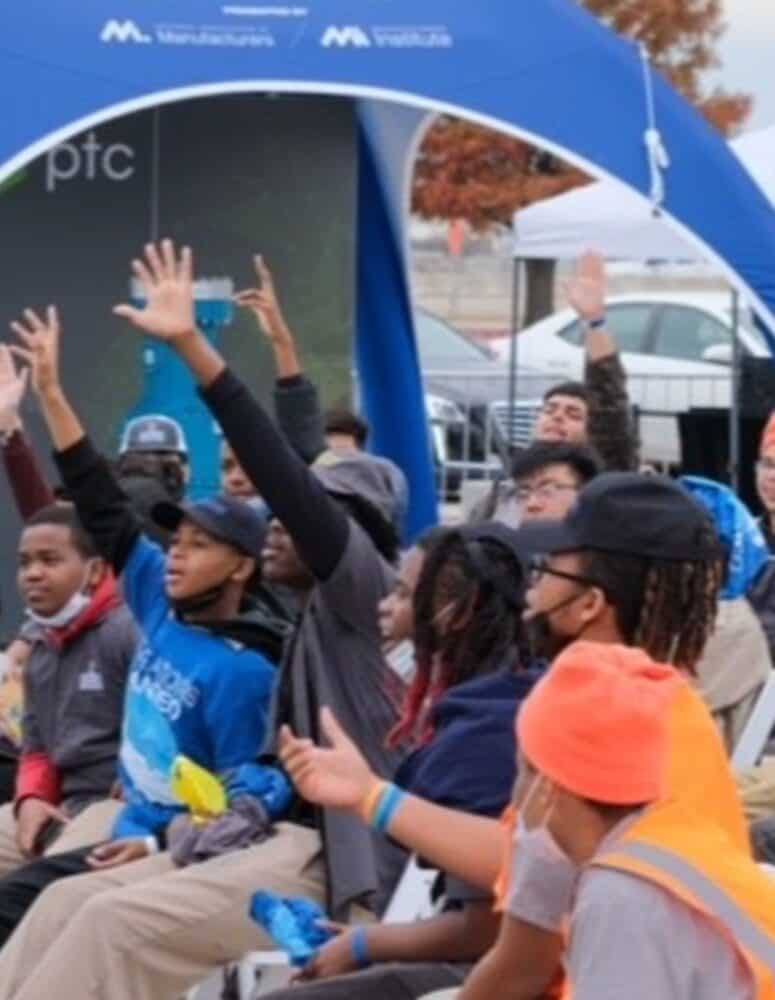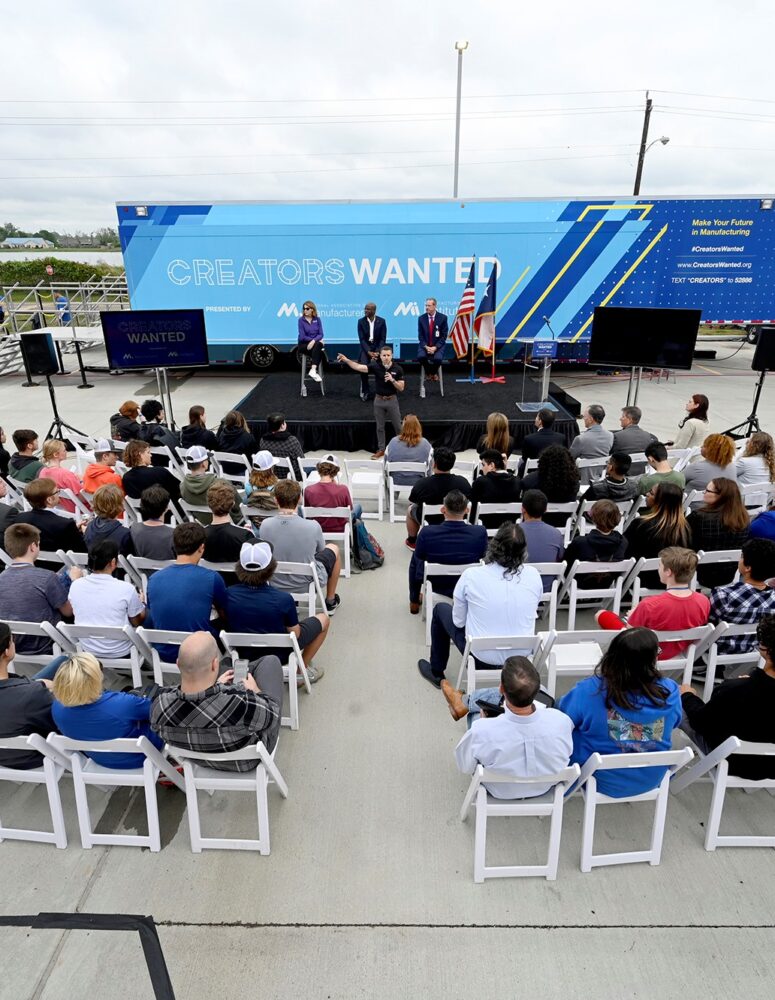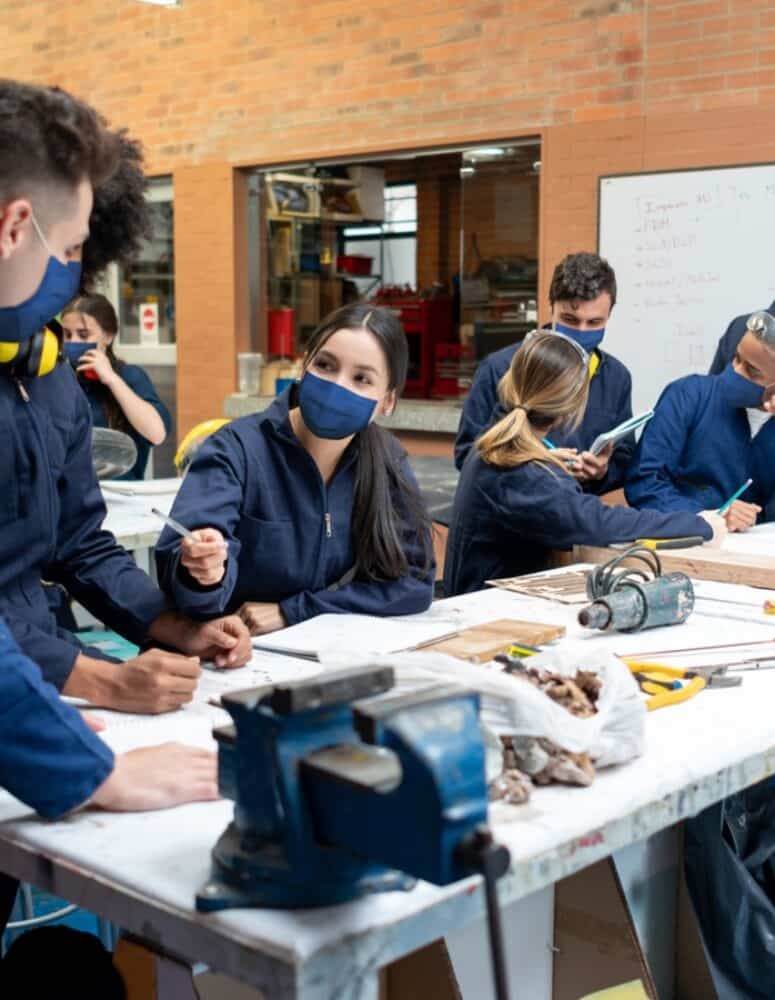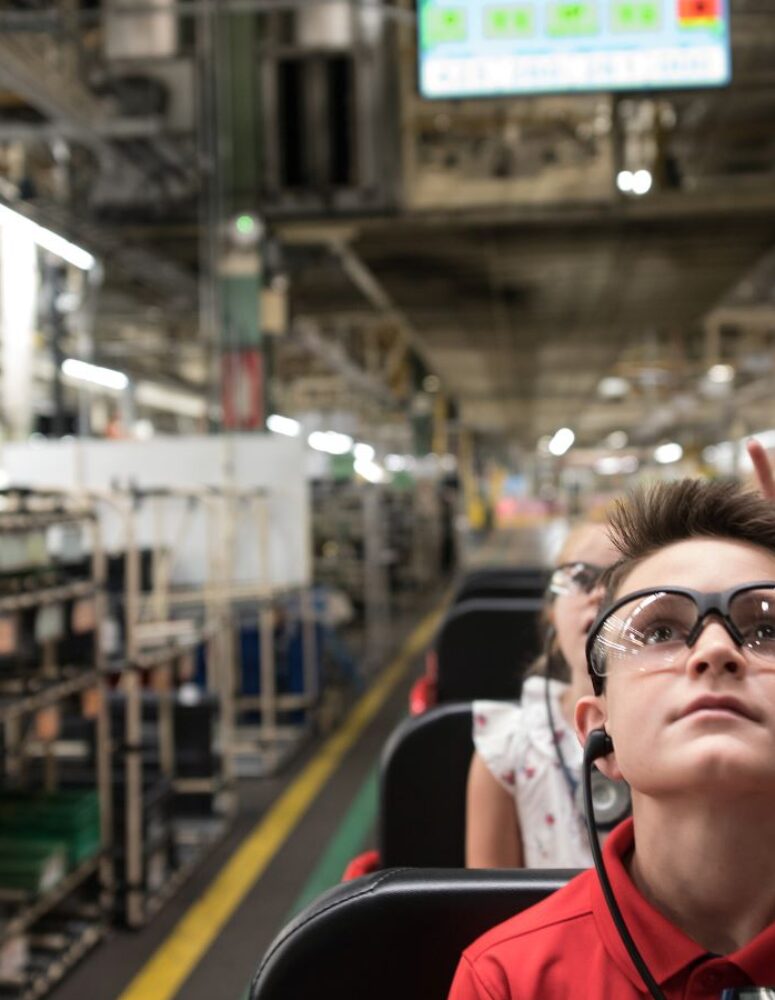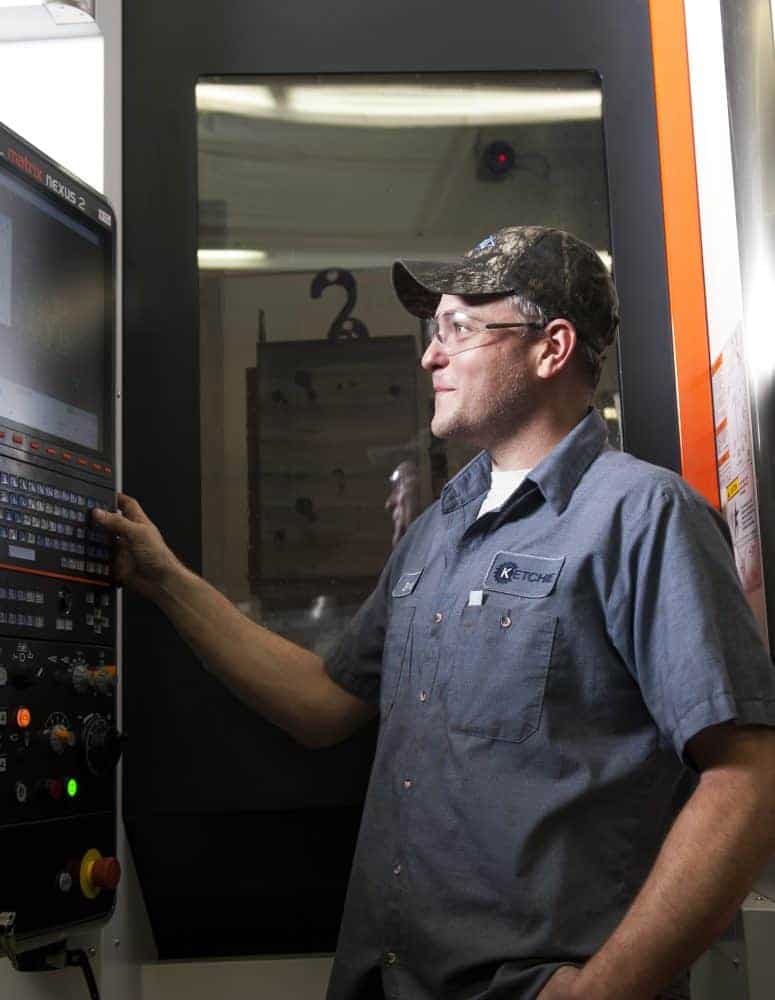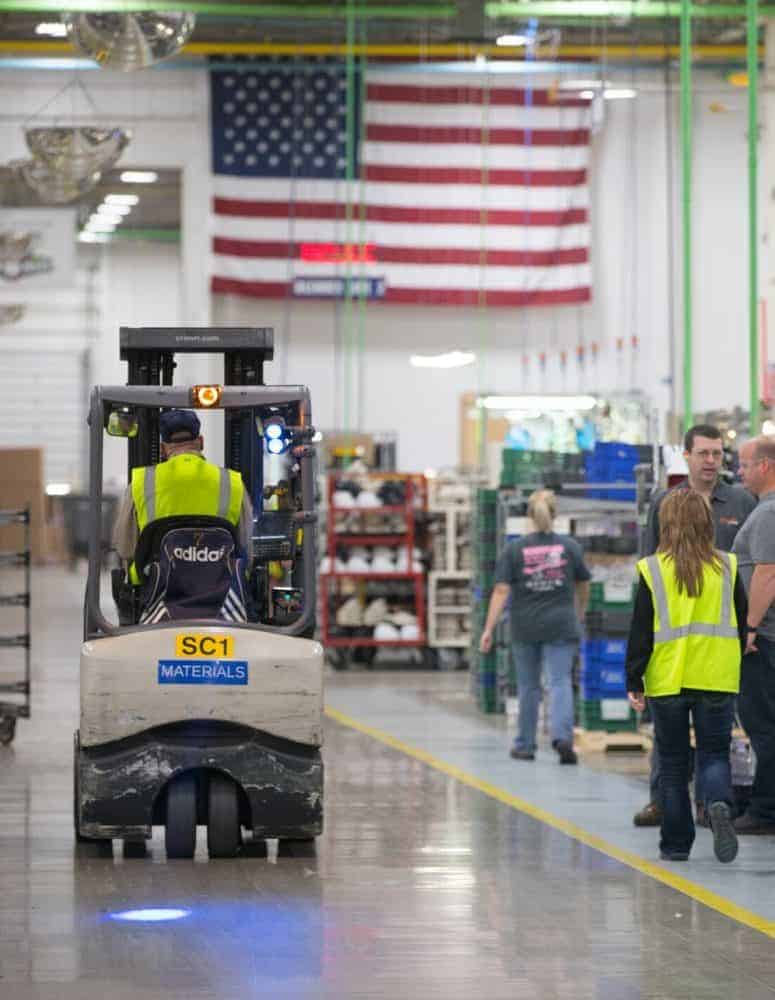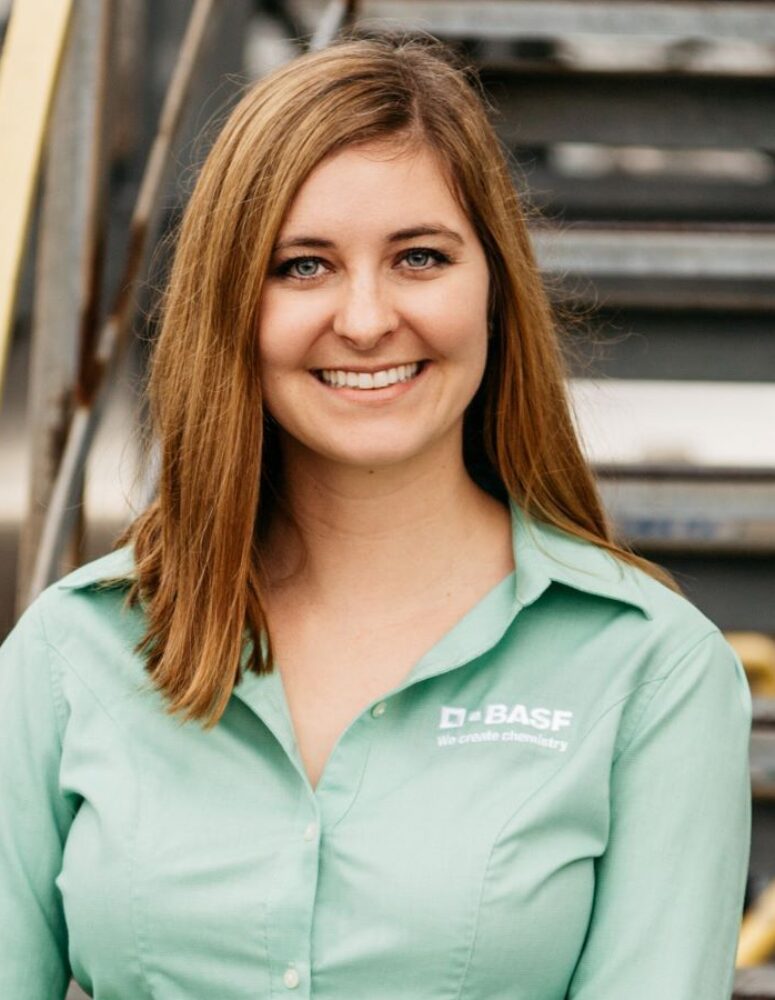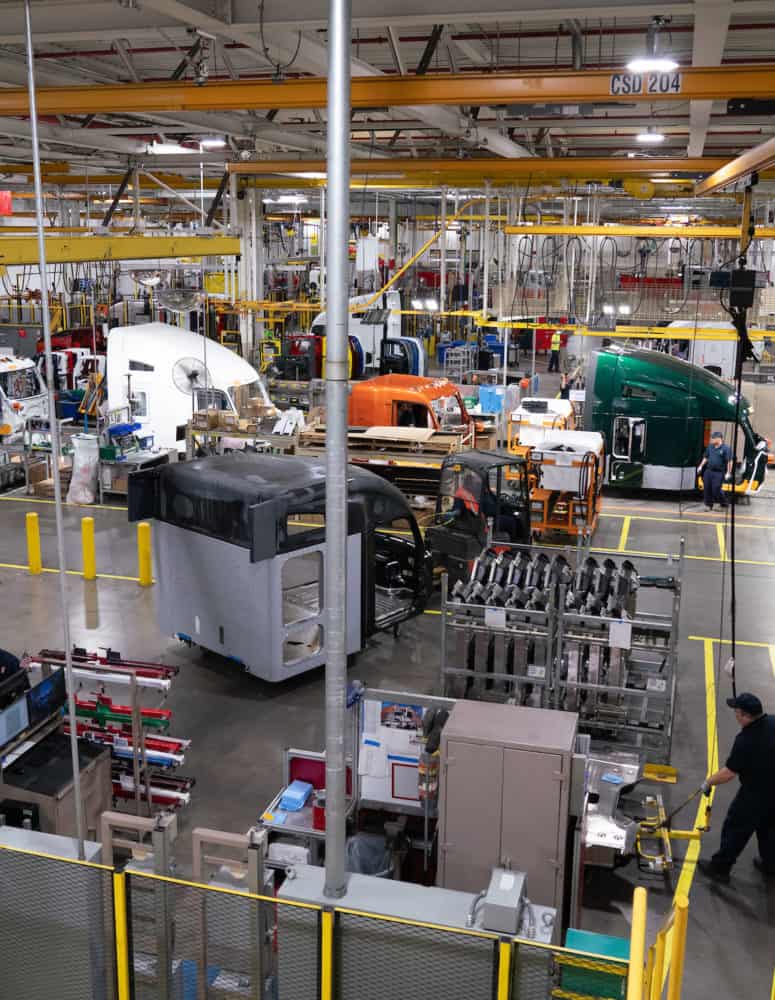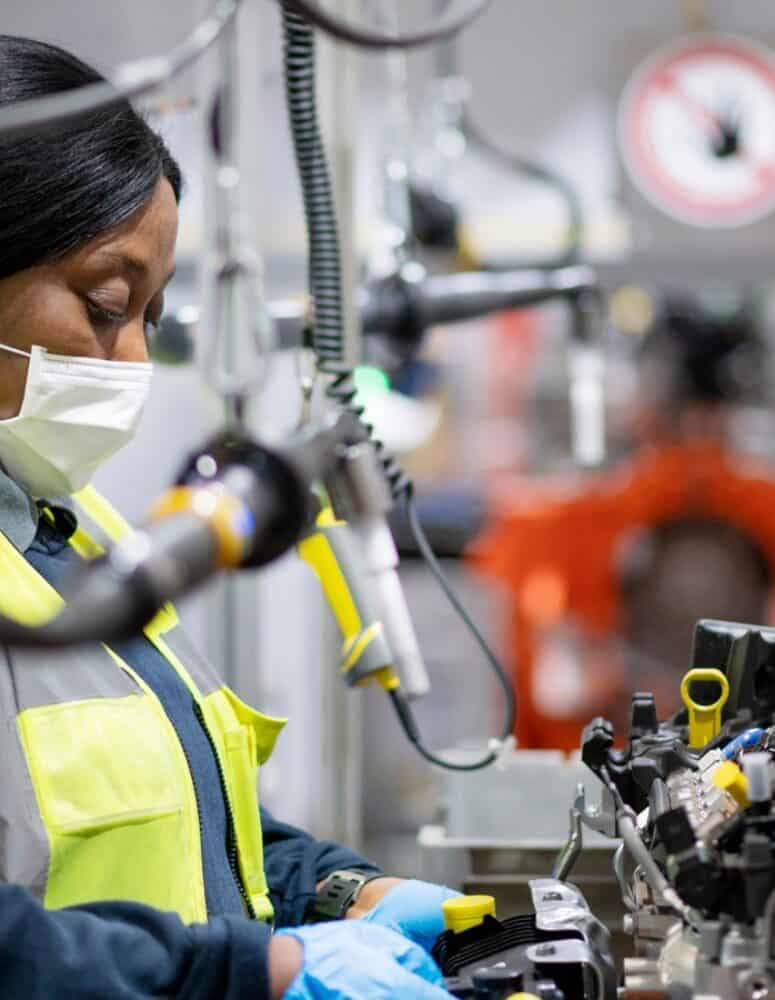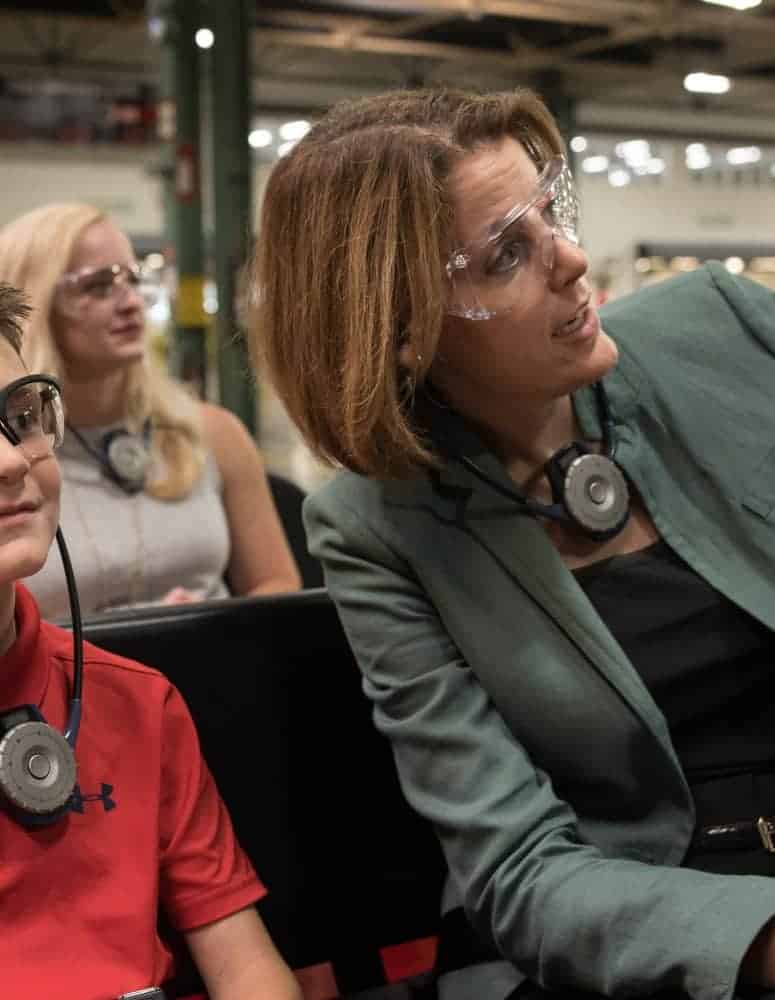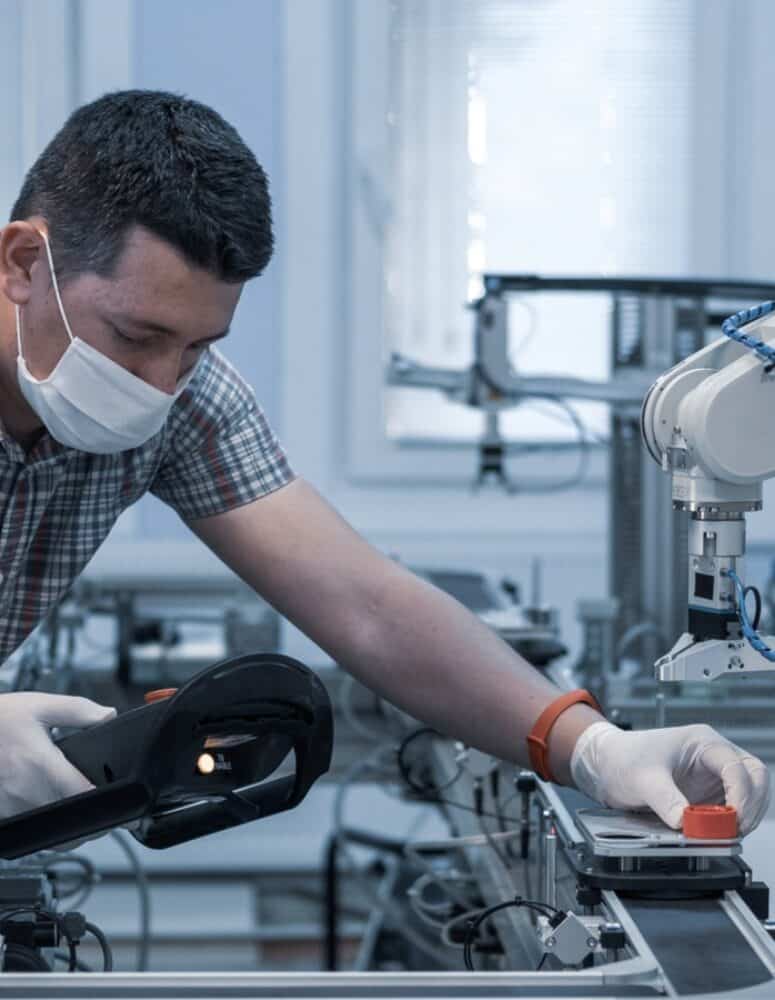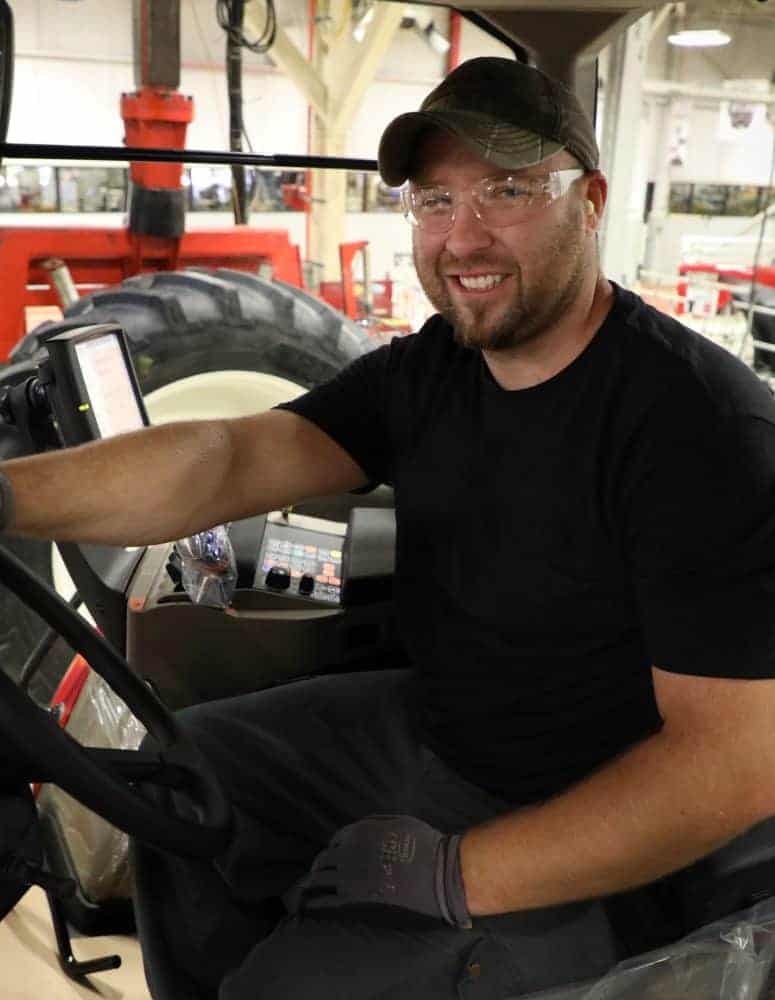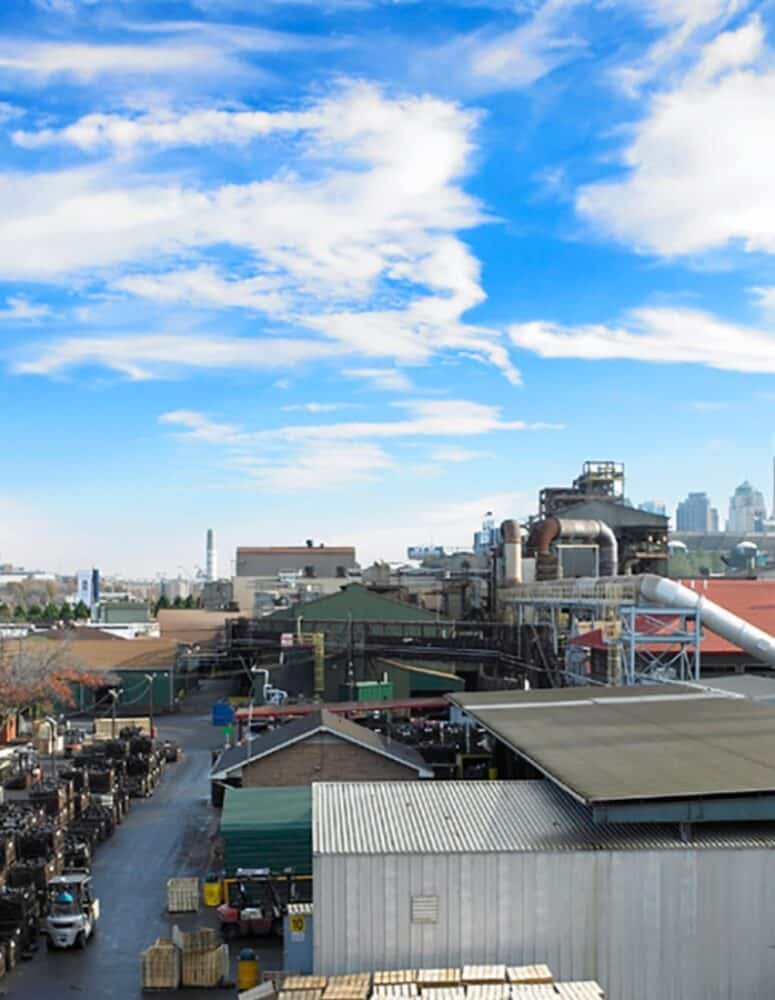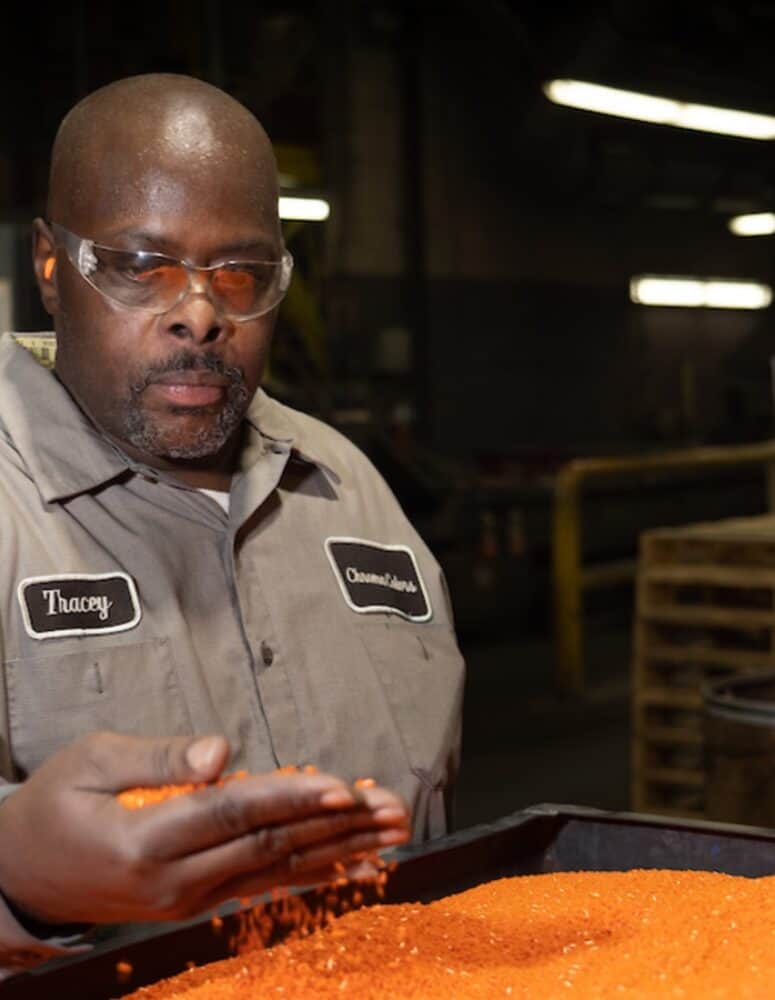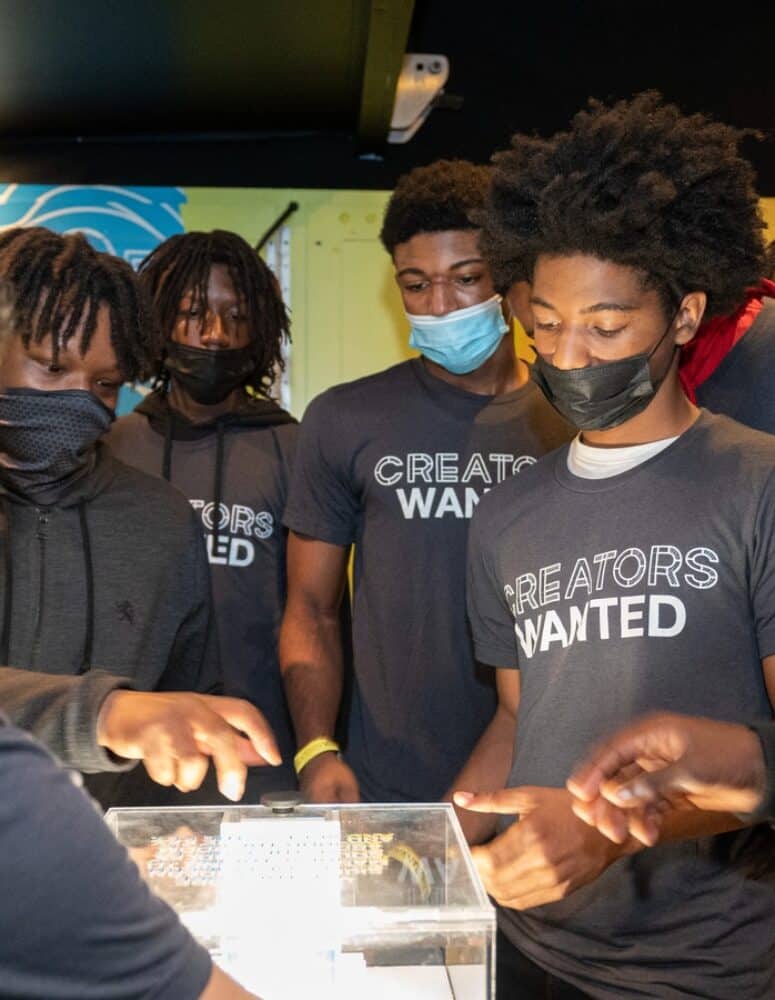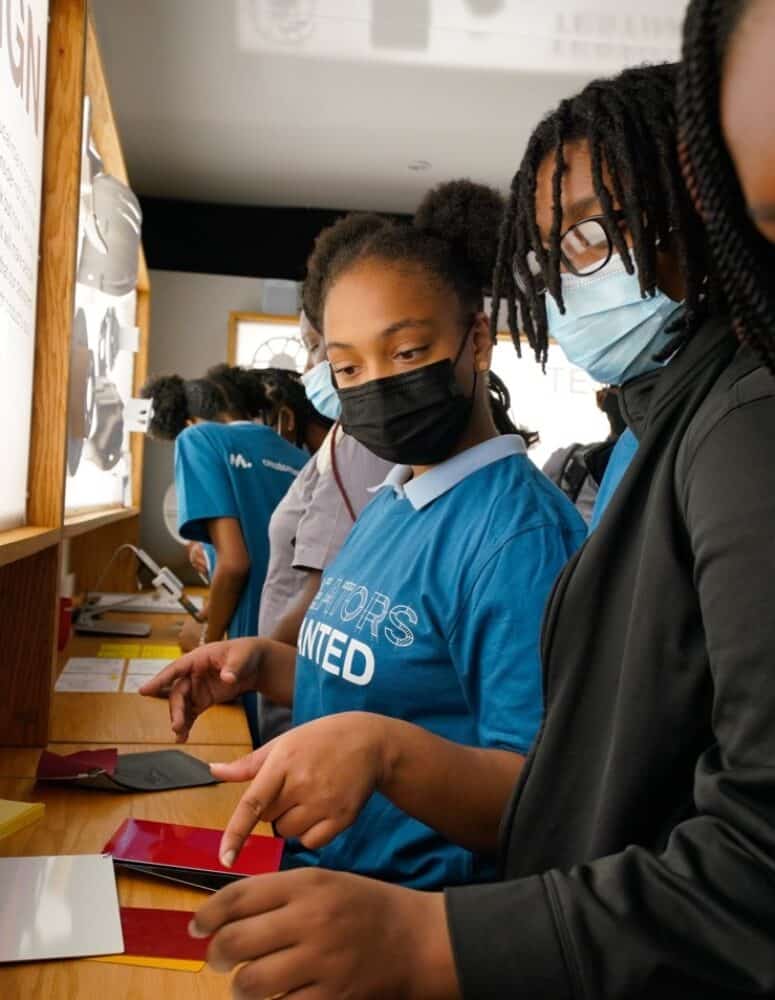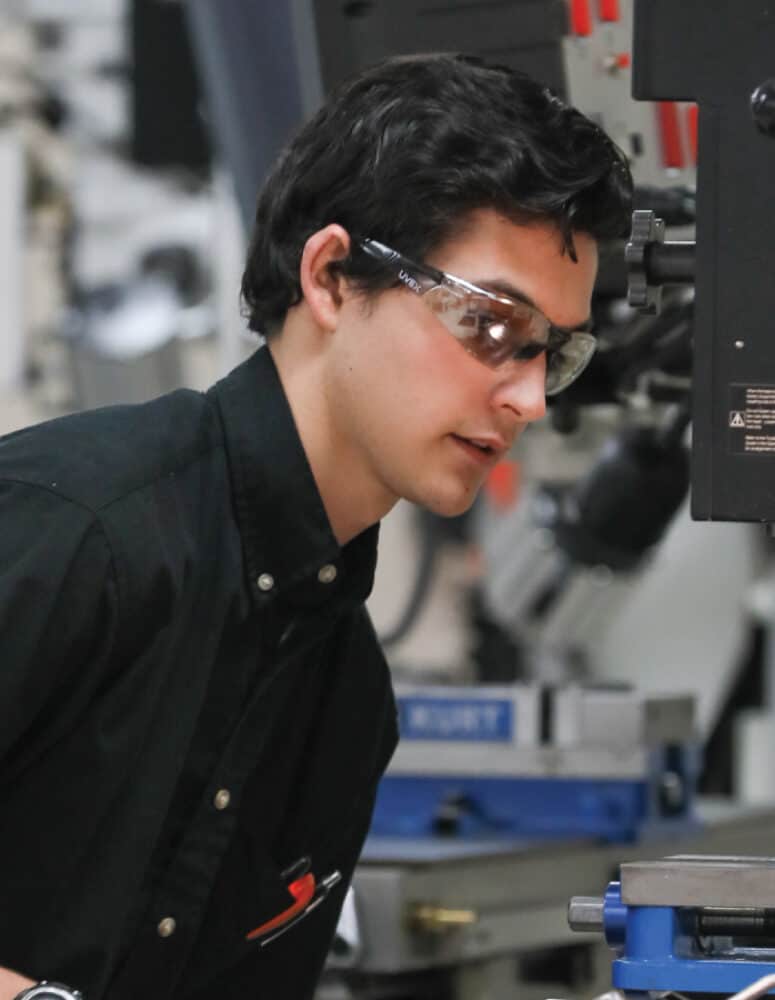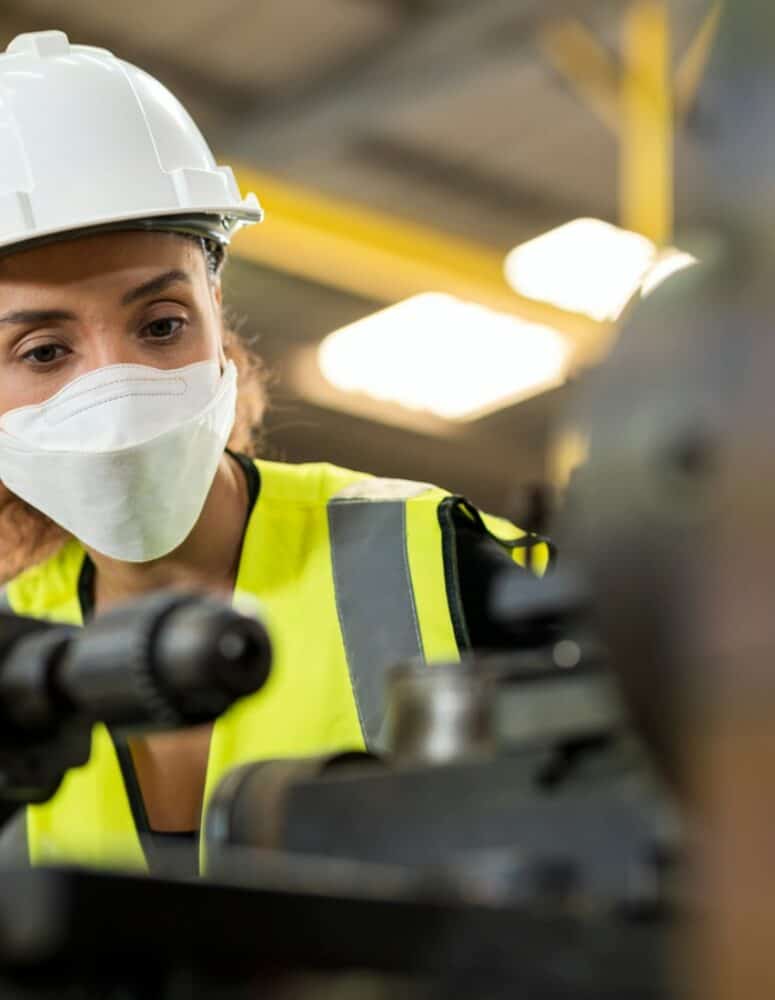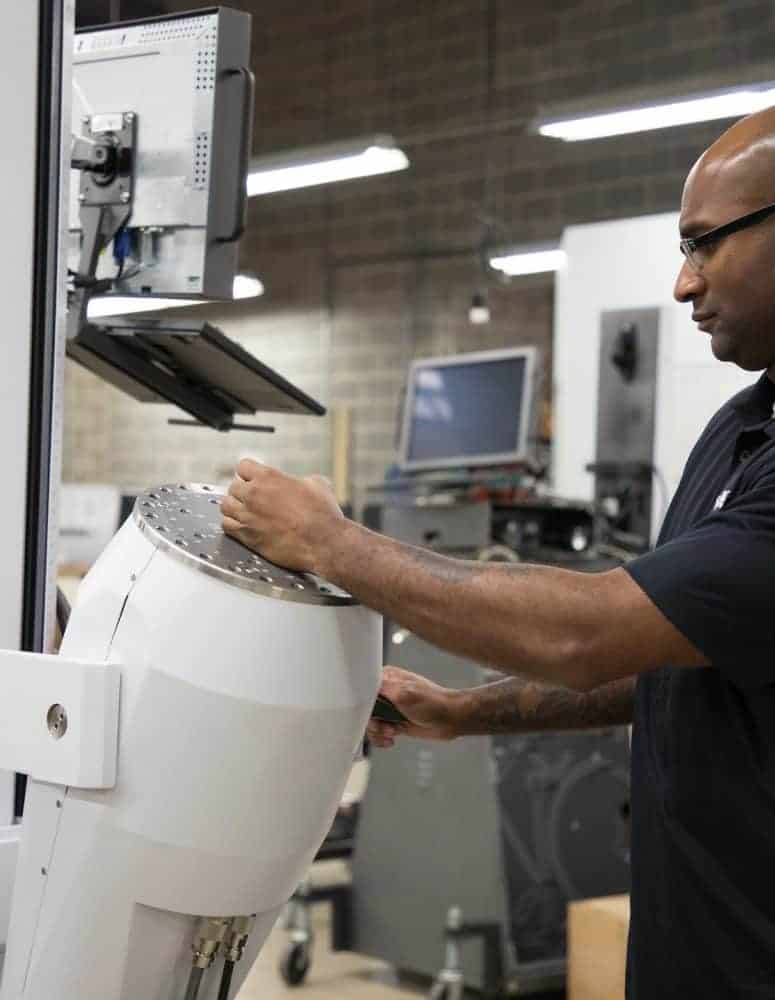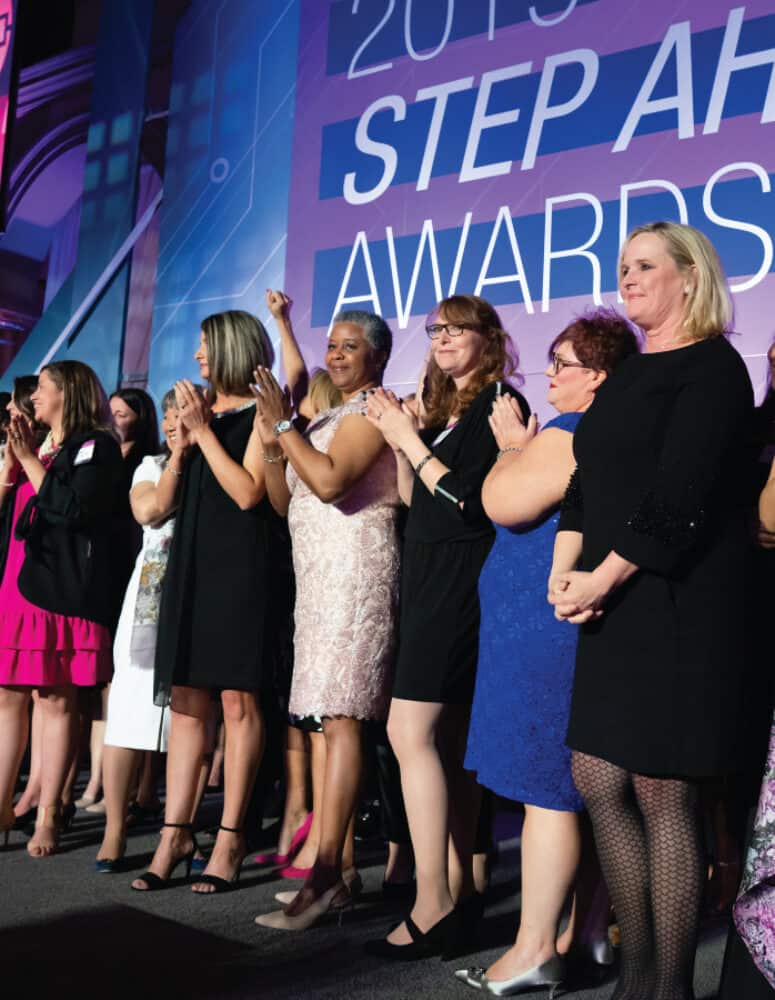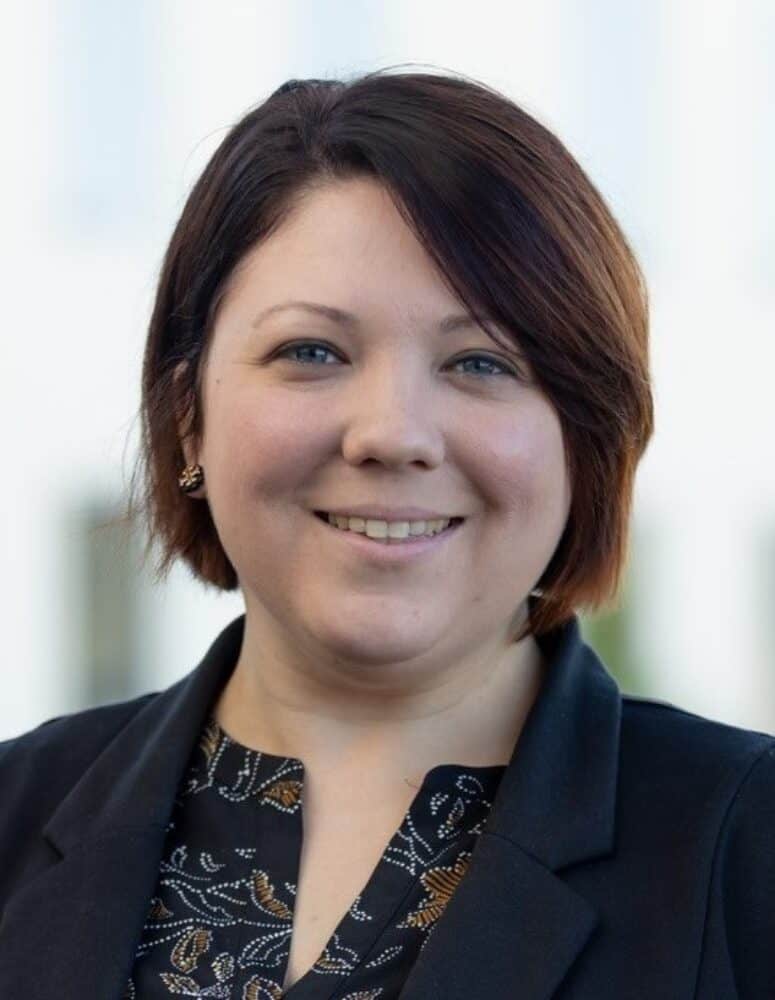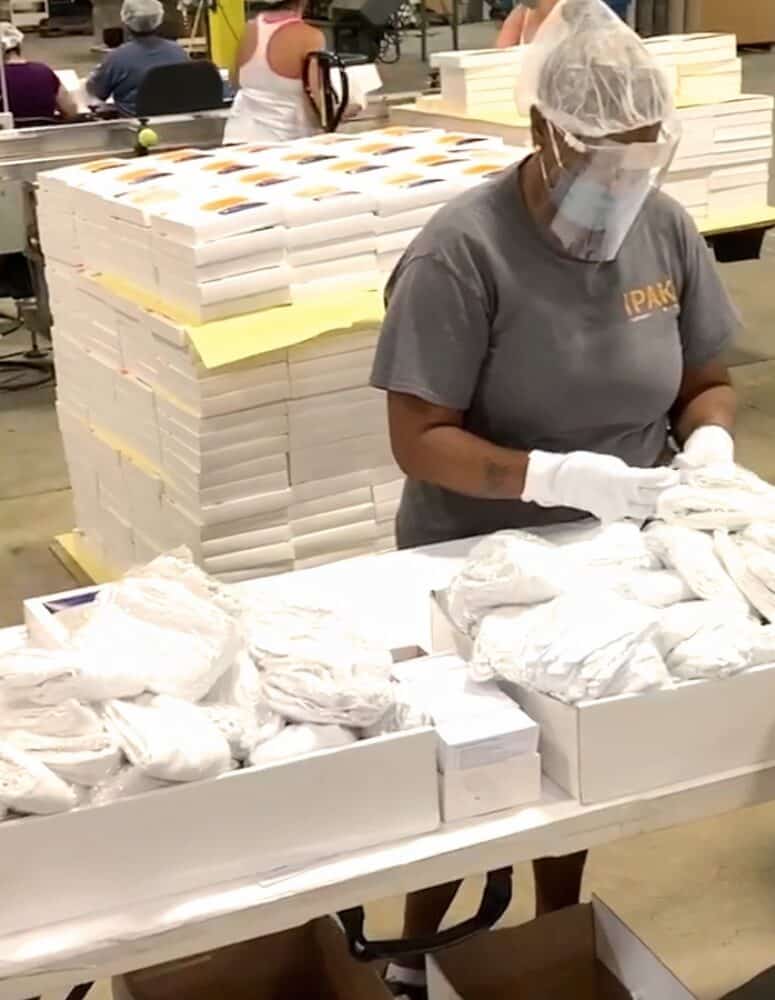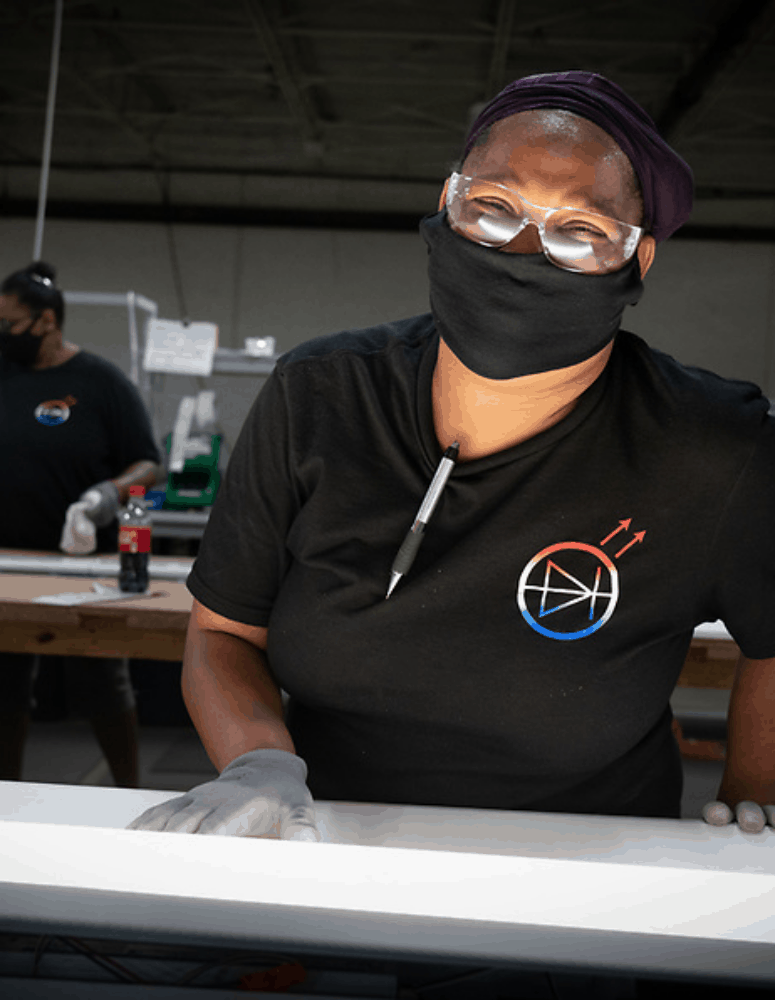Calling All Creators: Creators Wanted Live Arrives at Open Call 2022
Get the Latest News
Get involved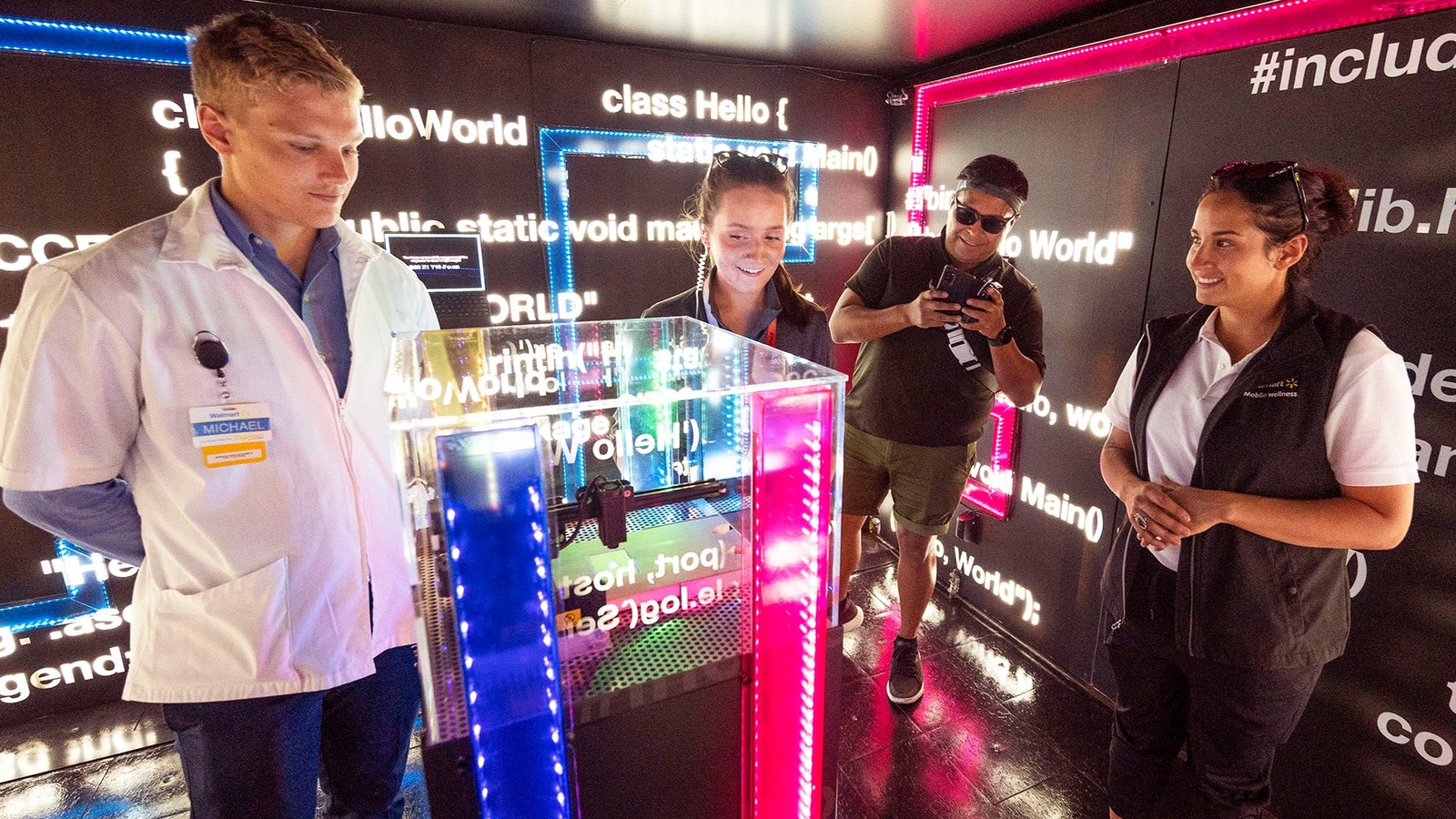
This week, the Creators Wanted Tour Live made its eighth national tour stop—at Walmart’s 9th annual open call for entrepreneurs and manufacturers.
Drawing a crowd: On Tuesday and Wednesday, the Creators Wanted mobile experience was onsite in Bentonville, Arkansas, as 1,100 small and medium-sized business owners pitched their products to Walmart and Sam’s Club for Walmart’s Open Call 2022. The ultimate prize for the business owners? A “gold ticket” to get their products into the stores.
- The two-day Creators Wanted stop drew more than 2,000 people, many of whom jumped at the opportunity to solve puzzles and “race to the future” in the award-winning, immersive escape room.
- In addition to Walmart, Chart Industries, a leading global manufacturer of highly engineered equipment servicing multiple applications in clean energy and industrial gas markets, helped bring the experience to Open Call attendees and the Bentonville community.
- The tour, which aims to generate interest in and excitement about manufacturing careers, is a joint project of the NAM and its workforce development and education partner The Manufacturing Institute.
Committed to manufacturing: The aim of bringing Creators Wanted to this year’s Open Call was to bolster the positive perception of modern manufacturing careers, recruit new manufacturers and connect entrepreneurs and manufacturers with the MI’s workforce-shortage solutions.
- Walmart has committed to spending $350 billion on products made, grown or assembled in the U.S., in addition to the $250 billion the company pledged in 2013 to spend on similar products.
- Total estimated job growth from these investments: 750,000 new American positions by 2031.
Who was there: MI President Carolyn Lee and Vice President of Program Execution Herb Grant were on hand to give manufacturers greater insight into the MI’s growing set of solutions to the dearth of skilled manufacturing labor.
- Also onsite was new Creators Wanted partner FactoryFix, whose team members helped attendee manufacturers source new talent for their businesses and taught job seekers how to build rewarding careers in the industry.
The reaction: “Wherever we go with our Creators Wanted Tour—including here in Bentonville, Arkansas—students, parents, career mentors and even professionals in other industries see what manufacturing can mean and create for futures,” said NAM Managing Vice President of Brand Strategy Chrys Kefalas. “It’s showing there’s dignity, a “cool” factor and massive reward in making things in the United States. Eyes light up.”
The reach: On the second day of the event, more than 3,000 students had already signed up online to learn more about modern manufacturing careers.
Up next: Coinciding with the Dow Great Lakes Bay Invitational on the LPGA tour, the Creators Wanted Tour Live will make its ninth stop in Midland, Michigan, July 13–16.
Get Ready for MFG Day 2022!
Get the Latest News
Get involved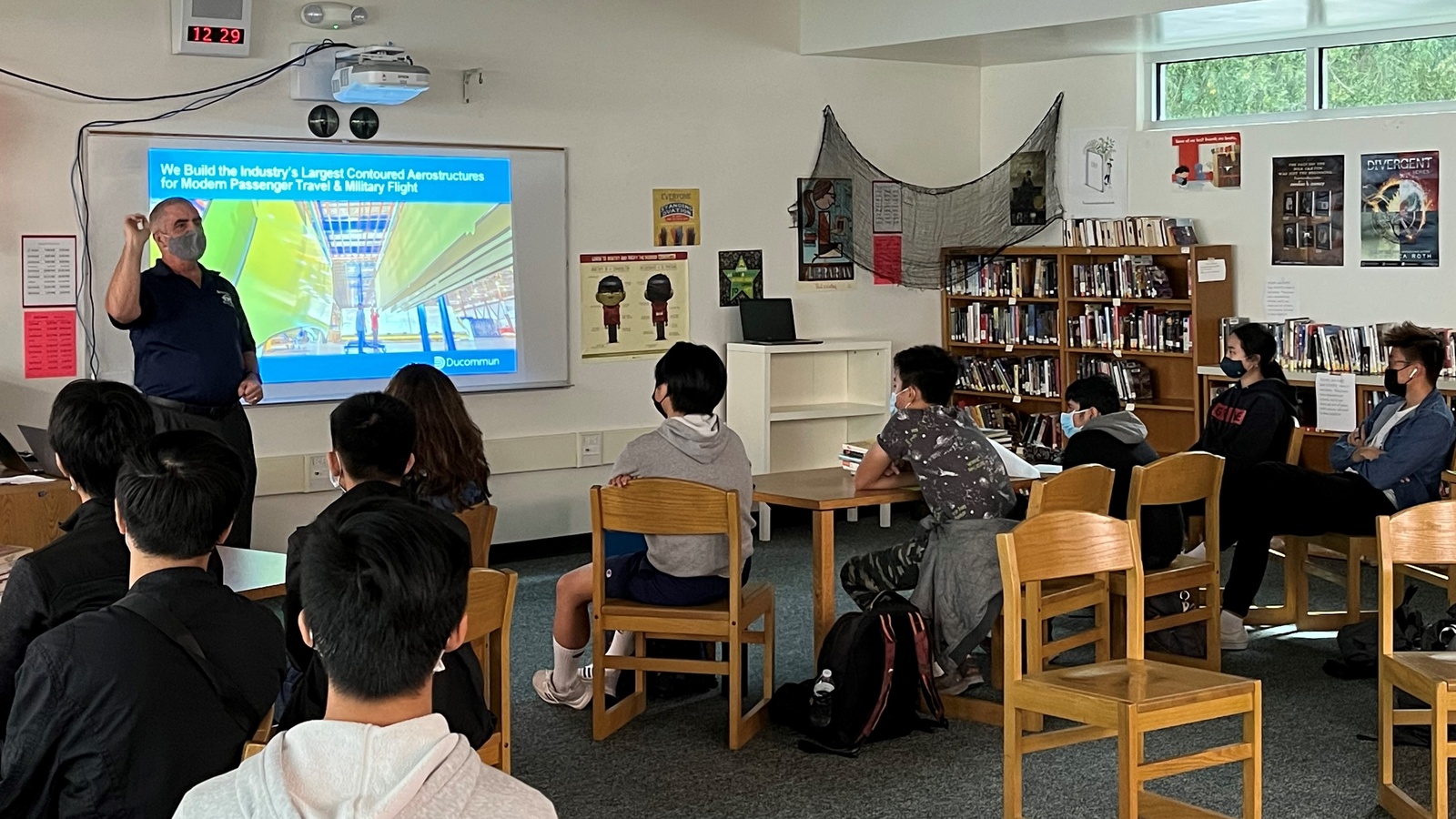
The Manufacturing Institute, the NAM’s workforce development and education partner, is hard at work preparing for MFG Day 2022, coming up on Oct. 7 and celebrated throughout the month of October. In a recent webinar—led by MI Director of Student Engagement Jen White—participants learned about the importance of MFG Day, as well as best practices for planning an MFG Day event.
What it is: MFG Day, organized nationally by the MI, is the industry’s largest grassroots movement to open doors to manufacturing for students, parents and educators.
- A major goal of MFG Day is to change common misconceptions and stereotypes about the manufacturing industry, letting participating students see for themselves that manufacturing plants are modern, safe workplaces that use the most technologically advanced processes to create all kinds of crucial goods.
- Host companies often welcome a mix of students, educators, parents and community leaders and provide them with an inside view of the industry—and the careers available.
Why it matters: MFG Day is crucial to solving the impending workforce crisis in the industry.
- Manufacturers will need to fill about 4 million jobs by 2030, but right now, more than half of those jobs are projected to be unfilled because of a lack of qualified talent or skills. That shortage could cost the U.S. economy up to $1 trillion!
- “We have to increase awareness among students, educators, parents and other adults of influence and the public in general of the importance that manufacturers play in our daily lives,” said White.
Planning an event: The MI has a variety of resources available to help companies plan and execute their MFG Day events this year.
- Past events have ranged from open houses with tours to expos, job fairs and roundtable discussions—and often, companies team up with other manufacturers nearby to create a group event.
- Check out creatorswanted.org/resources for help.
Best practices: During the webinar, White noted that the key to a successful MFG Day event is knowing who your audience is and what they are interested in—and making sure your company can engage with them.
- This can include working with local schools, and also “local liaisons, your workforce boards, your chambers of commerce, local associations, community-based organizations like boys and girls clubs or the Girl Scouts,” said White. “There’s so many different organizations out there that already have wonderful relationships with youth and students.”
- “The key is getting involved and starting to build those partnerships with those schools and those community organizations—and not just to have it be on that one day, but continually. I say MFG Day is every day,” White added.
Timeline: The time to start planning an MFG Day event is today!
- White recommends that potential MFG day hosts begin planning event logistics and start contacting schools or community groups during the summer months.
- Once a plan is in place, it can be registered on the Creators Wanted website and officially listed.
The last word: “We must build ongoing partnerships between companies, community, organizations and schools to continue the engagement beyond one single connection opportunity or one day,” said White. “It won’t easy. It won’t be quick, but it is the way ahead, and students are our future.”
“It Changed a Lot in My Life”: Tyson Foods’ Workforce Programs
Get the Latest News
Get InvolvedIf it hadn’t been for his cousin, Tagba Djato-Bougonou might never have found Tyson Foods.
In 2017, the engineer was working at a bank in Iowa, where he’d ultimately relocated after 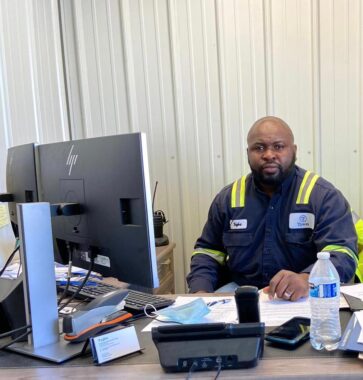 emigrating from Togo in West Africa. He was living with his cousin, who was working at Tyson Foods, when the cousin told him about Tyson’s 1+2 Maintenance Program.
emigrating from Togo in West Africa. He was living with his cousin, who was working at Tyson Foods, when the cousin told him about Tyson’s 1+2 Maintenance Program.
“He told me about the good stuff that Tyson has and the 1+2 Maintenance Program and what I could achieve with it,” Djato-Bougonou recalls. “And I thought, ‘OK, I’m going to take a shot with that program.’”
- Djato-Bougonou, who has an engineering background and a graduate degree from a U.S. university, was quickly hired on as part of the initiative.
- 1+2 allows new hires to “earn while you learn” by splitting their workdays between a classroom and hands-on work in a Tyson facility. It gets its name from the one year of education and training participants do, followed by the two years they commit to working for the company.
The results speak for themselves: now a full-time project engineer in Tyson’s Fresh Meats department, Djato-Bougonou is also pursuing a Ph.D. in innovation and project management.
Tyson’s workforce initiatives are increasingly designed to find and reward employees like Djato-Bougonou, who come to Tyson with impressive professional backgrounds earned in other countries.
- “We try to find candidates that, like Tagba, have a deep portfolio outside the U.S. and [whom] we can upskill, with some English and some recertification in the U.S.,” said Tyson Foods Workforce Development Trailblazer Anson Green, who leads economic opportunity efforts, including the in-plant career-development program Upward Pathways.
- In many of the more rural communities that are home to Tyson plants, “there is no large labor pool to draw from,” Green said. Creating unique paths for non-native-born employees to fill skilled-worker roles is a strategy that has helped fill this void.
The success stories are numerous, including many team members who came to the company to apply for one job but, owing to education or work experience garnered internationally, were able to continue on a professional path they thought they’d had to give up.
- One team member, formerly a nurse in her home country, is now developing her English skills and preparing for recertification in the U.S. to work at one of Tyson’s onsite health clinics, according to Green.
- Another team member who now works at a Tyson Foods’ Arkansas plant was previously a legal aide in the Supreme Court of the Dominican Republic. With Tyson’s support, she is also developing her English skills and will be applying to work as a paralegal in the company’s corporate office in Northwest Arkansas.
The last word: For Djato-Bougonou and other Tyson team members who have benefited from an encouraging corporate leadership, the sky’s now the professional limit.
- “I wanted to be part of things which can make a big difference in people’s lives,” Djato-Bougonou said, adding that with the 1+2 Program under his belt, he now feels empowered to do just that. “This program … gave me quite a lot of new skills. It changed a lot of things in my own life.”
How Manufacturers Are Investing in Their Future Workforce
Get the Latest News
Get involved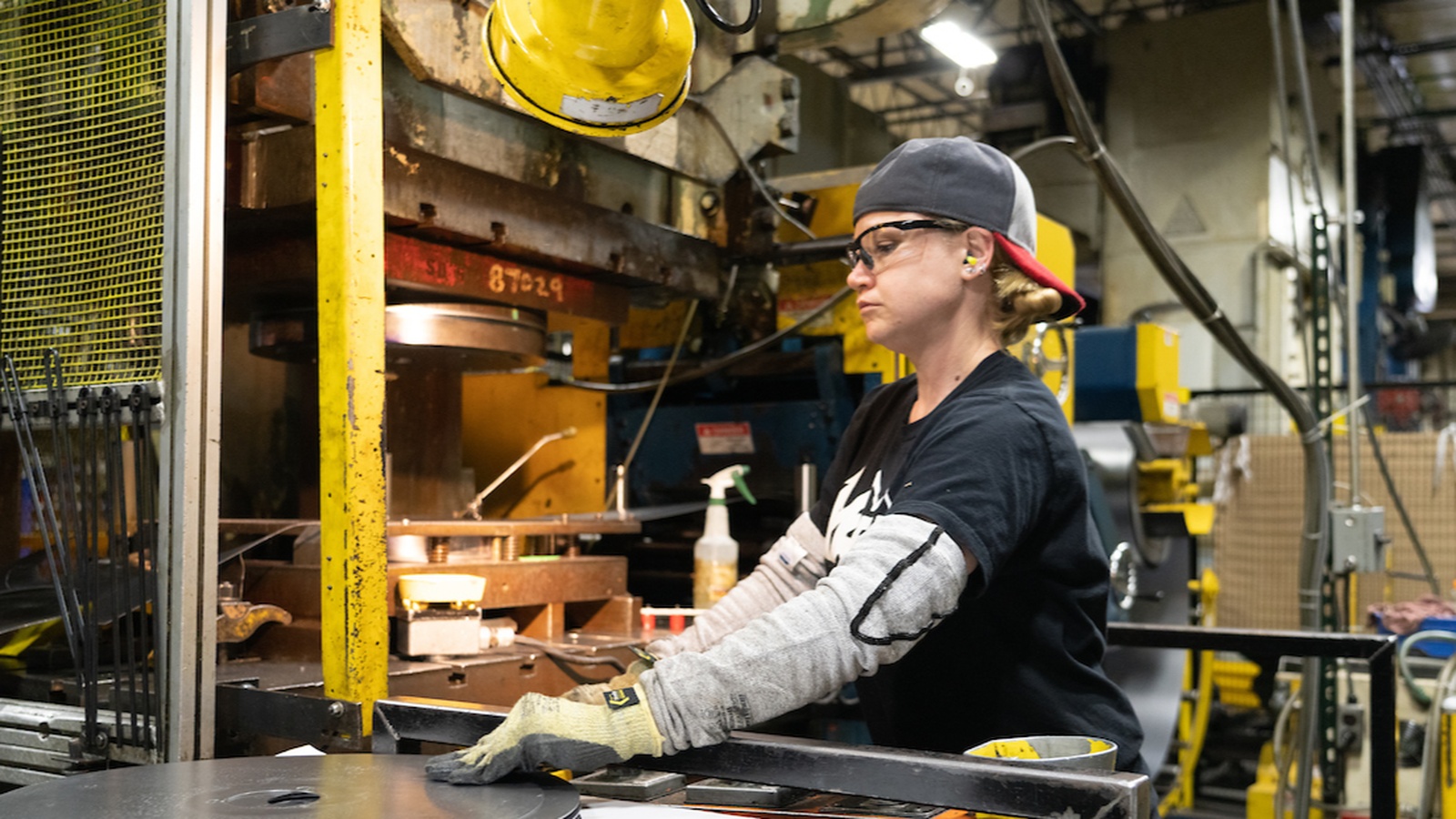
How are manufacturers developing a workforce for a fast-changing industry in a fast-changing decade? Recently, Manufacturing Institute President Carolyn Lee sat down with leaders at Union Pacific Railroad and the Caterpillar Foundation to find out.
Union Pacific Senior Vice President of Corporate Relations and Chief Administrative Officer Scott Moore discussed his company’s efforts to recruit more women and young people to the manufacturing industry. Caterpillar Foundation President Asha Varghese weighed in on Caterpillar Foundation’s efforts to support training opportunities for the military community and introduce high school students to innovative manufacturing careers.
What Union Pacific is up to: The Union Pacific and MI partnership is centered around a program called Careers on Track. This three-year, $3 million initiative is aimed at changing perceptions of the rail industry and encouraging women and youth to pursue careers in the field.
- As part of Careers on Track, Union Pacific and the MI developed Future Creators, a digital STEM curriculum focused on transportation, distribution and logistics.
- Future Creators has been used in more than 24,000 middle schools across the country with 80% of students increasing their knowledge of STEM careers.
How they’re doing it: The MI and Union Pacific created a 3D digital experience of a Union Pacific yard and locomotive that is designed to help women and young people explore technical fields interactively.
- Their other outreach efforts include 30-second PSA-style videos that showcase female employees and their stories to highlight career paths at Union Pacific and events hosted through the MI’s STEP Women’s Initiative.
- Union Pacific has reached more than 250,000 women through this content, demonstrating what women just like them can achieve in the manufacturing industry.
Union Pacific says: “We’ve always known diversity is key at Union Pacific, and to achieve that, there are deliberate things we need to do,” said Moore. “We’re going to have to reach people. Around 90% of our workforce is union, primarily in the field, across 23 states and 7,000 communities. We have to get in those communities—and The Manufacturing Institute gave us the tools to do that well.”
What Caterpillar is doing: The Caterpillar Foundation’s partnership with the MI is investing in workforce readiness and building an empowered and skilled manufacturing workforce.
- This partnership is expanding the MI’s Heroes MAKE America program, which provides certification and career-readiness training to transitioning service members, veterans, military spouses and others who work in or with the armed services.
- One of the partnership’s first efforts was to create a fully virtual program to further Heroes’ reach regardless of physical location.
- The first 100% virtual Certified Production Technician training program was launched in late 2021, in partnership with Texas State Technical College and TRANSFRVR.
In addition, the Caterpillar Foundation is also working with the MI’s FAME program—a 21-month apprenticeship program founded by Toyota that grants certifications and prepares young people for high-skilled jobs in the manufacturing workforce.
- Most recently, the MI and the Caterpillar Foundation created a new FAME chapter in Seguin, Texas.
Caterpillar says: “Caterpillar Foundation focuses on resilient communities, and we understand the importance of investing in local communities in order to ensure that we’re providing them with the right resources, with the right services and with the right skills for employability,” said Varghese. “What really attracted us to the MI is first and foremost that strategic alignment…focusing on that untapped talent.”
The last word: “As a nonprofit, the MI depends on the investments of corporate and philanthropic leaders to tackle the workforce crisis in manufacturing with innovative, exciting workforce solutions,” said Lee. “The MI’s work has expanded to include a full collection of initiatives that not only train individuals for rewarding careers but also provide the thought leadership, best practices and learning networks that manufacturers need to address their workforce issues.”
How Manufacturers Compete in the Labor Market
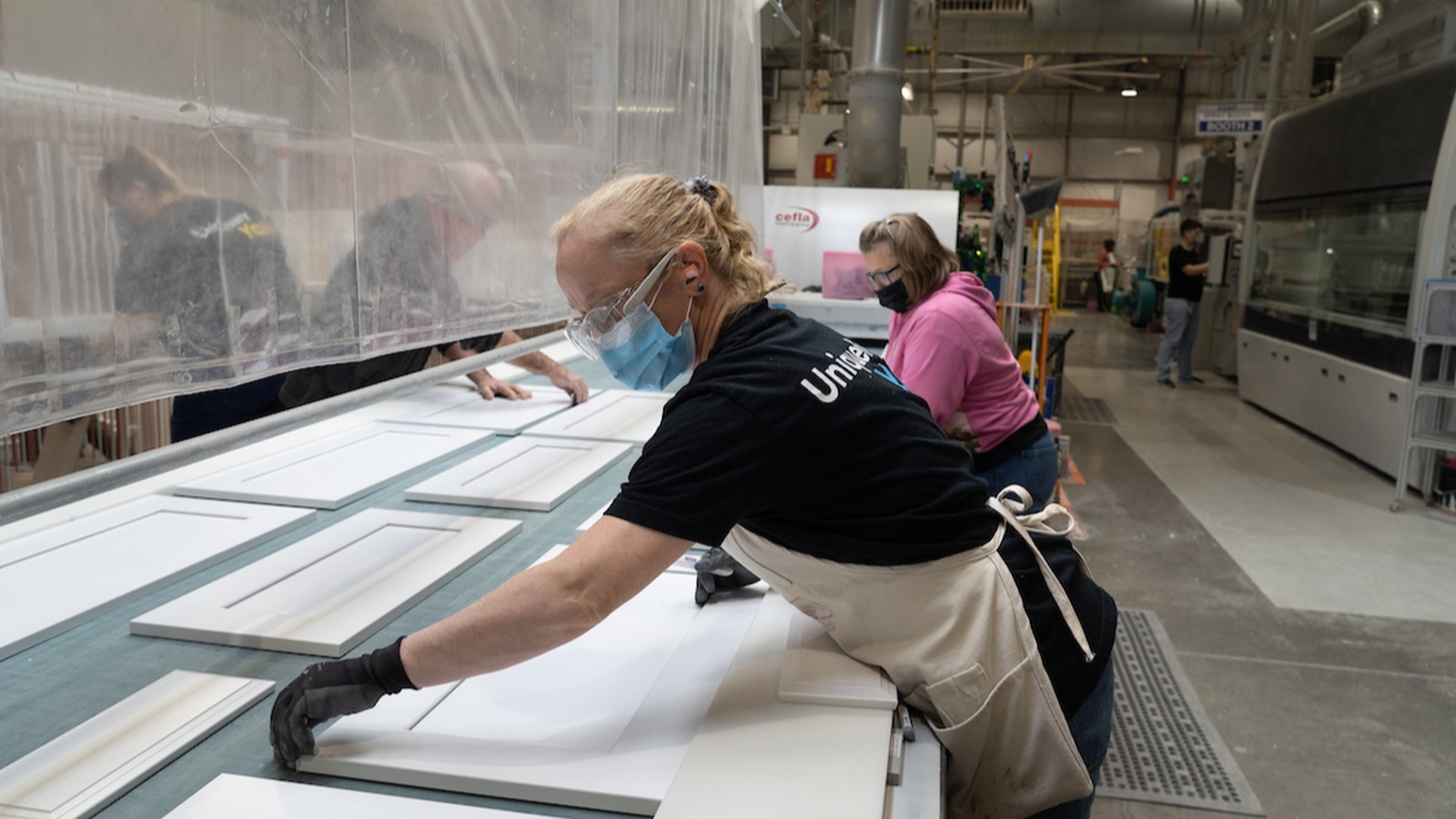
Manufacturing companies are increasing wages to stay competitive in attracting and retaining workers, according to a new study conducted by The Manufacturing Institute and Colonial Life.
Tight labor market: Of the survey respondents, 93% had unfilled positions in their companies that they were struggling to find qualified applicants for.
- Nearly 90% said they have increased compensation and incentives to pursue and retain employees.
- Seventy-three percent of respondents felt that increasing compensation helped their company stay competitive.
The big picture: Average hourly earnings for production and nonsupervisory workers in manufacturing climbed to $24.78 in March, up 5.5% from one year ago.
- Despite significant wage increases, the labor force participation rate was below pre-pandemic levels at just 62.2% in April.
Other benefits: Hourly wages and salaries were most important for attracting and retaining workers, but other benefits were also effective.
- Manufacturing companies have also attracted employees with health, dental and vision insurance, bonuses and/or additional income opportunities, paid vacation and sick time, contributions to a 401(k) or retirement plan and flexible work hours.
What the MI is saying: “We continue to see record growth in wages, and many of the companies we spoke with are offering even more generous benefits packages to try and differentiate themselves from other sectors struggling to find talent in a tight labor market,” said MI President Carolyn Lee.
- “We’re averaging more than 800,000 open jobs in manufacturing a month, and the MI is focused on equipping manufacturers with tools and strategies to overcome this challenge so we can reach our full potential.”
Learn more: Looking for retention strategies you can use right away? The MI will be hosting a retention workshop on June 7–8. Find out more and register here.
Manufacturing “Is the Place to Be”: Creators Wanted Wraps Up Freeport Stop
Get the Latest News
Get involved 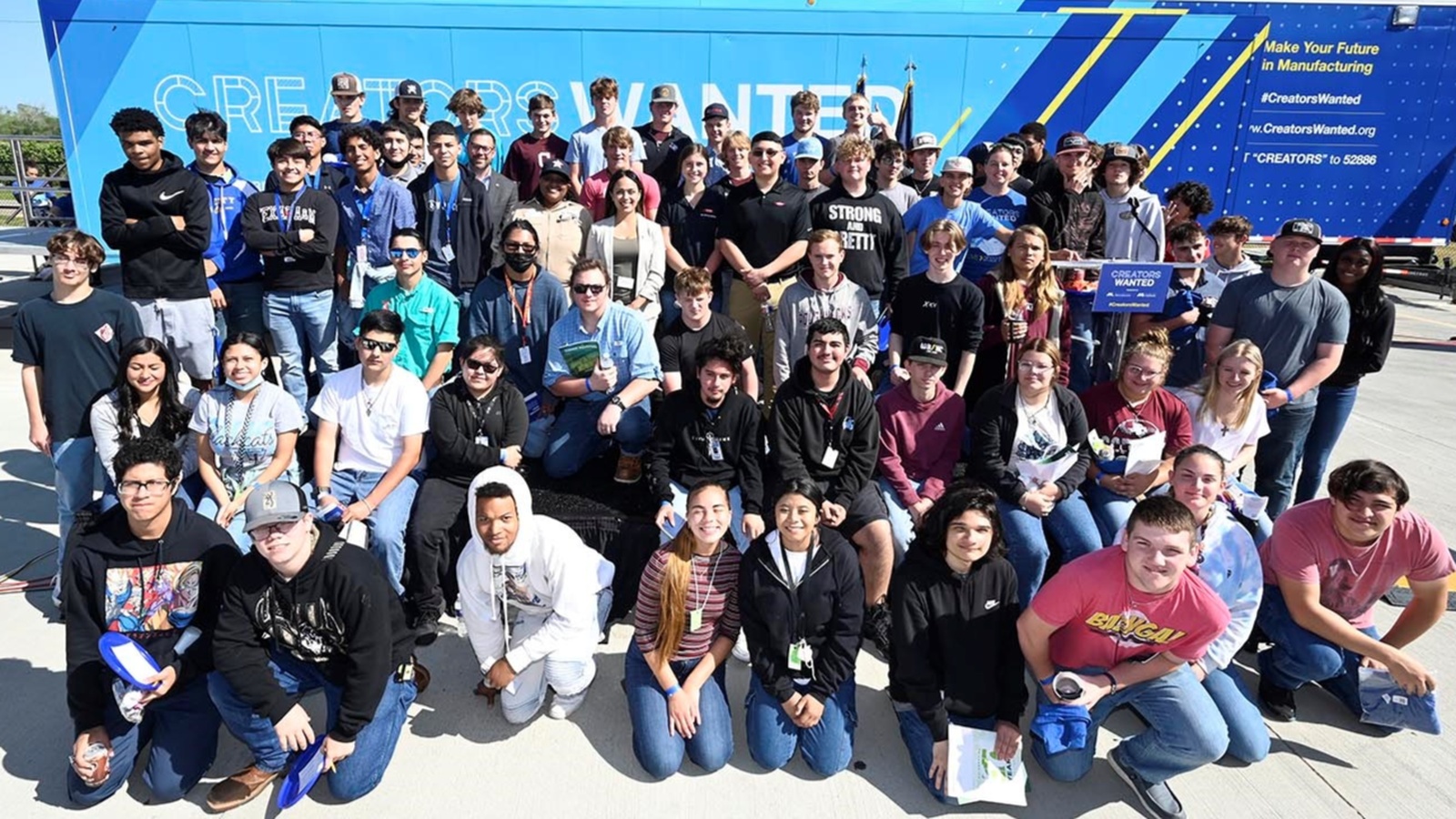
As job recruiters rush back to campuses and career fairs nationwide, the NAM and The Manufacturing Institute’s Creators Wanted Tour Live continued to help manufacturers stand out in the competitive labor market this week in Freeport, Texas.
The reach: The three-day tour stop, presented by Creators Wanted Legacy Sponsor Dow, drew more than 800 students to Brazosport ISD’s new Career and Technical Education Center.
- More than 25,000 students and career mentors signed up online to learn more about modern manufacturing careers.
- Students came from all over the area, including from Brazoswood, Angleton, Brazosport, Columbia and Sweeny High Schools.
Who’s who: Students and teachers got access to top industry leaders, including:
- Dow Senior Vice President of Operations, Manufacturing and Engineering John Sampson;
- Dow Vice President of Operations for the Gulf Coast Fernando Signorini;
- Cornerstone Building Brands Executive Vice President and Chief Human Resources Officer Katy Theroux;
- Dow Plants A&B Manufacturing Director for Texas Operations Sharon Hulgan; and
- BASF Corporation Vice President of Operations, Polyamide & Precursors Deborah McKitten.
These leaders joined creators at their companies, as well as team members at Fluor Corporation, on livestreamed panels throughout the stop to discuss their career journeys and offer advice to students. Here are some of the themes of the event.
Inclusion and diversity: Manufacturing is “for all,” said Dow Associate Research & Development Director Kalyani Martinelango during a Creators Panel on inclusion, diversity and equity.
- She continued: “For Dow to be competitive, we need to be inclusive. And it’s not just about diversity of gender or race … but thought, too. We have to be passionate about inclusion because it’s the right thing to do.”
Change the world, live a good life: Panelists uniformly agreed that manufacturing careers offer significant benefits.
- From making sustainable products to driving innovations to advancing decarbonization to earning great pay, industry careers offer a lot.
- “Manufacturing is an awesome [career] option,” said Hulgan, who oversees two plants in the company’s Texas operations. “They’re in the top 10% of income earners. … This is the place to be if you like to have a nice lifestyle.”
Calling all women: Women shouldn’t hesitate to jump into manufacturing, the panelists advised.
- Manufacturing “is a male-dominated industry, yes,” said Dow Texas Operations Apprentice Leader for the United States Natalia Muniz Rivera. “However, we’re changing that. … Don’t be shy. Get yourself up. This diversity is what makes the future better.”
Meanwhile, the teacher- and student-endorsed immersive experience continued to win accolades.
- One student said, “They made this [in] an actual fun and interactive way so that people can get interested and into manufacturing.”
- Students repeatedly confirmed that the experience changed their perceptions and increased their interest in manufacturing careers.
Activities galore: It wasn’t just Dow that brought the A-team and A-game, complete with a robotic dog and lizard, to excite students.
- Chart Industries and Turner Industries brought team members to answer student questions and help them explore manufacturing in their own backyards.
- Brazosport College helped students chart the next steps in their career processes.
- And FactoryFix was on hand to provide pathways to career coaching and job opportunities.
What young people are saying: In surveys and testimonials, one point came across clearly to prospective manufacturers.
- “It’s definitely a lucrative field to be a part of,” said Dow apprentice Chris Thurman.
- Dow apprentice Anna Green reinforced the point, pointing out that she worked with a good many people who received two-year degrees at Brazosport College and “are making six figures a year.”
The last word: “Creators Wanted shows the variety of opportunities available,” Brazosport ISD Superintendent Dan Massey told The Facts Newspaper (subscription). “There is something to meet the needs of every single student. That’s what’s amazing about this event.”
What’s next? Creators Wanted is working on securing additional financial commitments to finalize a fall tour schedule and reach more students and communities. Email [email protected] if you are interested in supporting the campaign.
“Find Your Future”: Creators Wanted Arrives in Freeport, TX
Get the Latest News
Get involved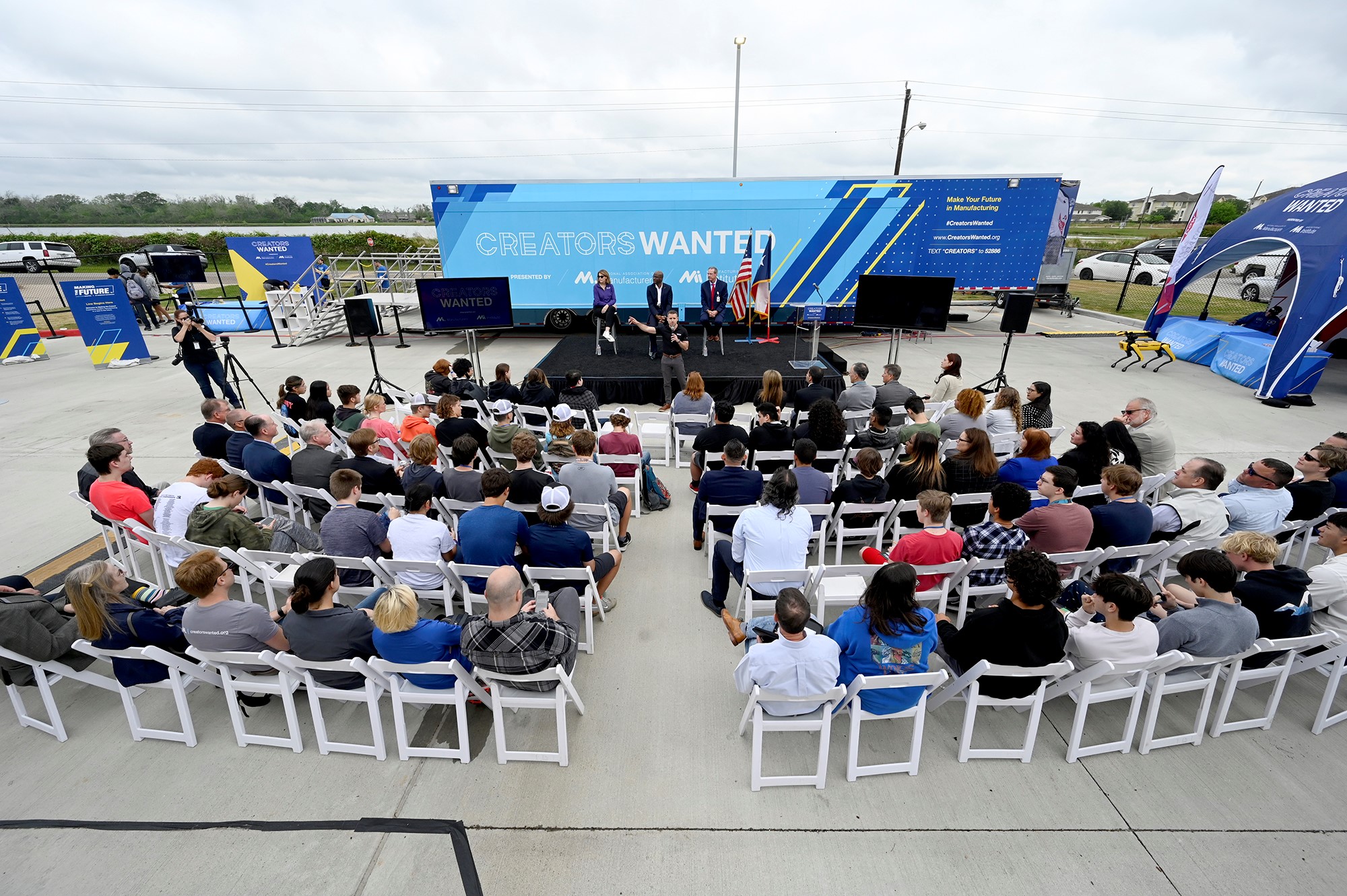
If you want to make a good living, help change the world for the better and have a good time doing it, modern manufacturing has a job for you. That was the message relayed to local high school students this Tuesday at the premier event of the Creators Wanted Tour Live’s seventh stop, in the Freeport, Texas, area.
Inspiring students: The CW tour, a joint project of the NAM and its workforce development and education partner, The Manufacturing Institute, aims to inspire, educate and empower tomorrow’s workforce.
- For this week’s tour stop, presented by Dow, the immersive mobile experience came to Brazosport Independent School District’s Career and Technical Education Center in Clute, Texas.
- The CTE Center, which is located near Dow’s largest manufacturing facility in the world, strives to prepare students for careers in a global economy by emphasizing career and technical education.
- “We believe that the future of our workforce is highly dependent on the quality of public education,” said Brazosport Independent School District Superintendent Danny Massey.
Seeking difference makers: Dow Senior Vice President of Operations, Manufacturing and Engineering John Sampson highlighted the numerous opportunities available in modern manufacturing to do interesting, well-paid, life-changing work.
- “I hope some of you—all of you—will be creators,” Sampson told students at the kickoff event. “At this point in your lives, you’re probably thinking about what you might want to major in. … I’m sure some of you might be interested in making some money, [too,] but you probably want to do more than that.”
- “You probably want to make the world a better place, create something people want [and] have some fun. … I promise you this: We’ll always have a place for you on our team.”
Filling a void: Before the students rushed off to complete their “race to the future” in the mobile experience, MI President Carolyn Lee laid it out for them: Creators aren’t just wanted—they’re sorely needed to keep the world running and advancing.
- “Without a steady stream of talented, bright young people … we can’t keep up the good work of continuously making our products,” Lee said. “[But] this is not a get-one-job-and-stay-there-for-40-years [situation]. This is a choose-your-own-adventure [career path] with continuing skills and challenges and opportunities and learning along the way.”
- There are currently more than 850,000 open manufacturing jobs, Lee said, and by the end of this decade, modern manufacturing will require an additional 4 million workers.
Find your future: “We’re here because we know there’s something for everybody in manufacturing,” Sampson told event attendees in his closing remarks. “We hope you will find your future in modern manufacturing.”
- Dow Vice President of Operations for the Gulf Coast Fernando Signorini echoed his colleague’s sentiment at a Creators Spotlight panel later on Tuesday. “If your desire is to go and get an education in engineering, you’re going to have a lot of opportunities,” he said.
- “If your desire is to have a technical degree, [you’re] going to have a lot of opportunities. For a company like Dow to work, we need all the different … diversities in education and degrees. You see everything in there.”
The impact: More than 750 students are expected to tour the mobile experience this week at the CTE Center, and more than 25,000 students and career mentors in the Houston-metro area have already signed up online to learn more about modern manufacturing careers as a result of this latest tour stop.
Take a look: Check out this highlight reel from the second day of the tour stop.
The MI Gets Funding for FAME
Get the Latest News
Get involved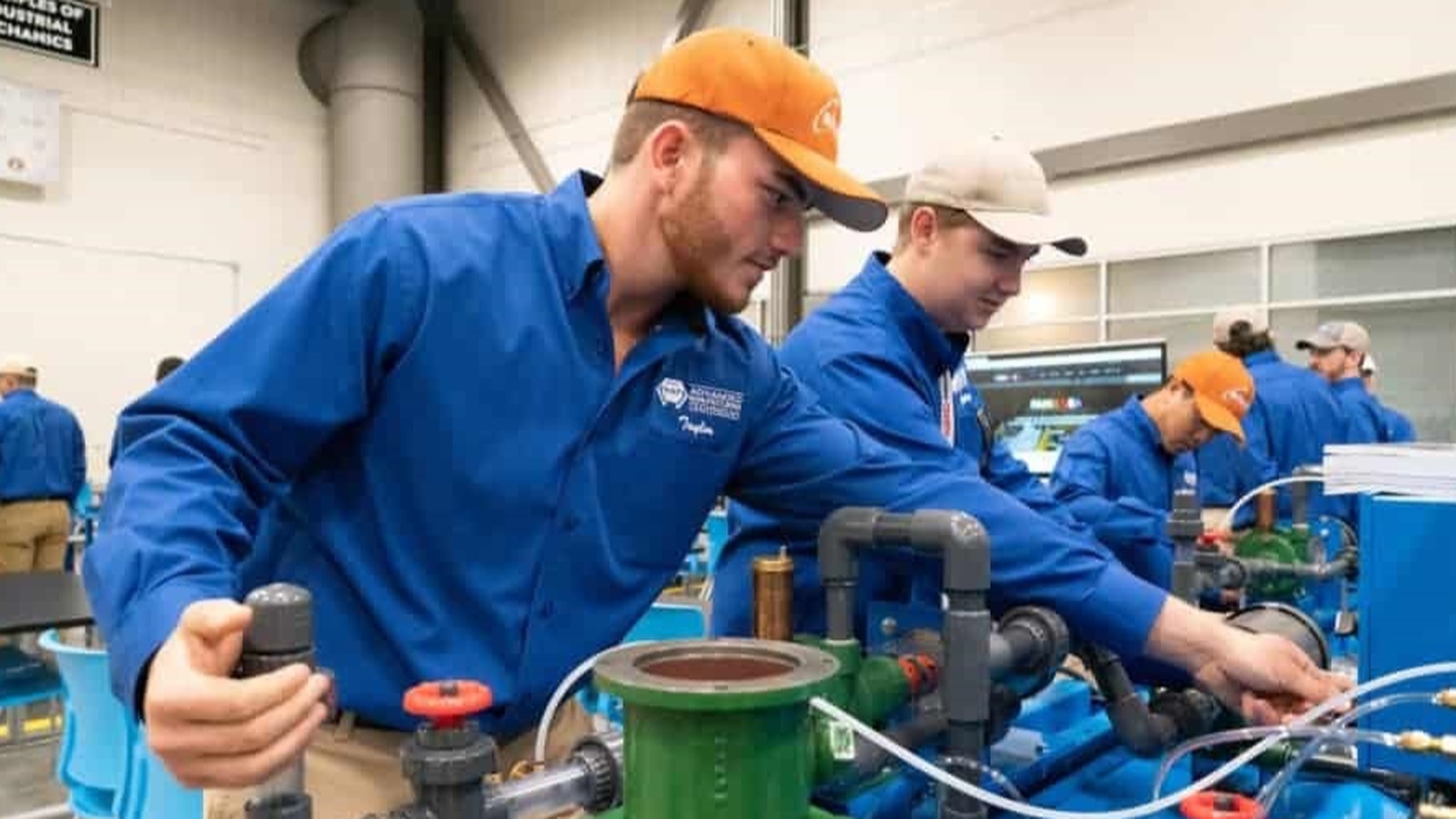
The Manufacturing Institute, the NAM’s nonprofit workforce development and education partner, has been named an inaugural recipient of Stanley Black & Decker grant funding for its “leadership and expansion” of the Toyota-founded Federation for Advanced Manufacturing Education (FAME) program.
The details: The MI, which currently operates FAME, a workforce development and training program, is one of 86 organizations chosen to receive funds from Stanley Black & Decker’s first-ever Empower Makers Global Impact Challenge grant.
- This year’s grants will help skill and reskill approximately 180,000 people in manufacturing through 2022.
- The program will give up to $25 million over the next five years to nonprofits “supporting trade workforce development initiatives in the construction and manufacturing sectors,” according to the MI.
Empowering makers: “Stanley Black & Decker is immensely proud to support the MI through their FAME programming as they work to skill and reskill the next generation of trade professionals,” said Stanley Black & Decker Vice President of Social Impact Diane Cantello.
- “Currently in the U.S., there are an estimated 650,000 open construction jobs and 10 million unfilled manufacturing jobs globally. Our purpose is to support ‘Those Who Make the World,’ and being able to fund educational programs and nonprofits that are revitalizing trade careers directly connects to our core mission. Thanks to this year’s Makers Grant Recipients, together we will be one step closer to closing the trade skills gap.”
The MI says: “Stanley Black & Decker’s commitment to FAME demonstrates how business can lead as they answer the call to grow the workforce of today and tomorrow,” said MI President Carolyn Lee.
- “We are grateful for their partnership in this effort to empower students with pathways to exciting, rewarding careers in modern manufacturing.”
About FAME: Founded in 2010 by Toyota, FAME aims to help students become highly skilled, sought-after makers capable of meeting the unique needs and challenges of the modern manufacturing sector.
Learn more about Stanley Black & Decker’s Empower Makers Global Impact Challenge at EmpowerMakers.com.
An ExxonMobil Engineer Makes a Difference
Get the Latest News
Get Involved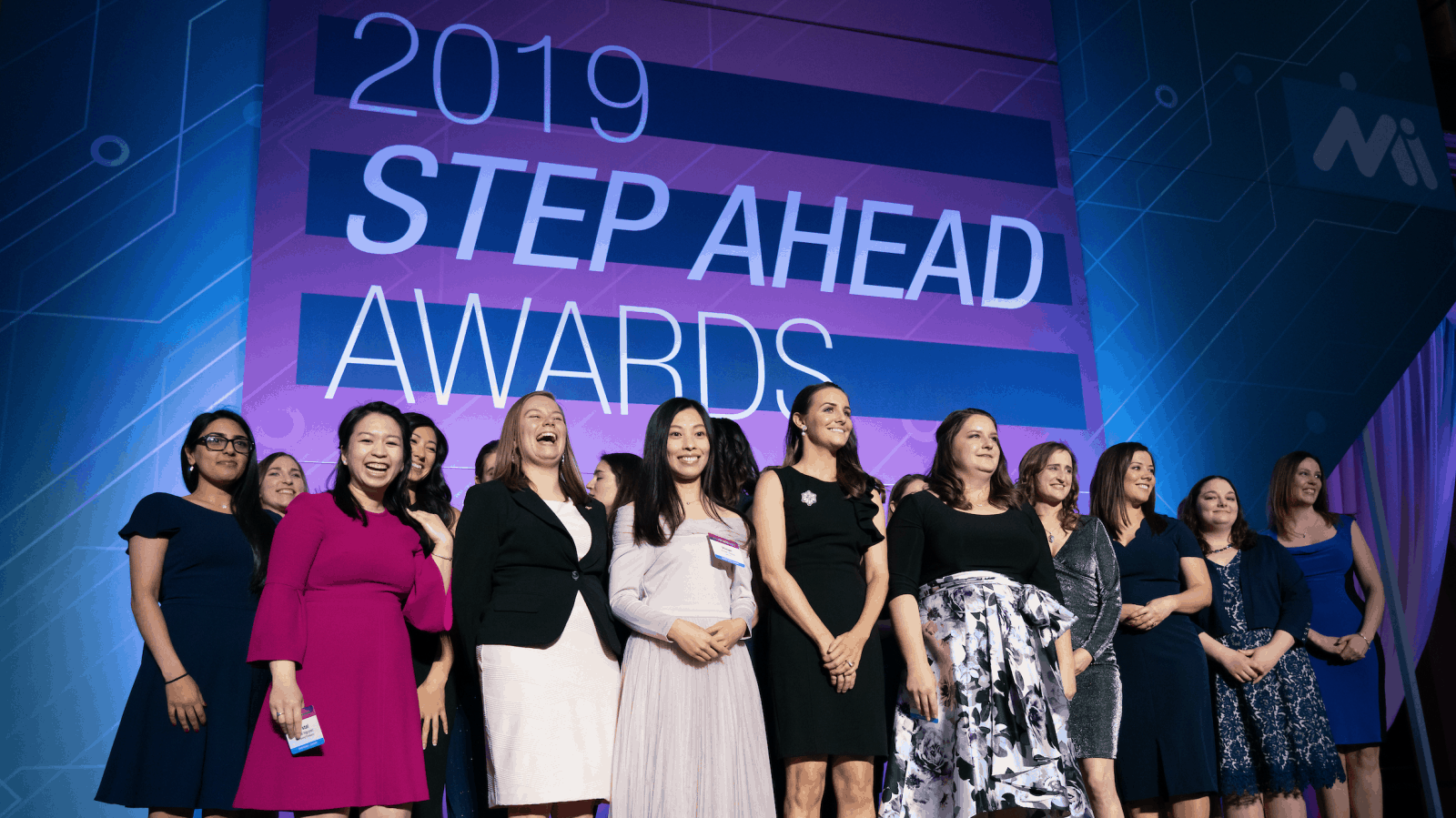
Erika Anderson didn’t always know she wanted to be an engineer. In fact, for most of her childhood, it wasn’t a career path she had even heard about.
- “I didn’t know what engineering was until my senior year in high school,” said Anderson. “I thought an engineer was a train driver, and nobody told me differently.”
A moment of truth: During her senior year, Anderson was told to research the major she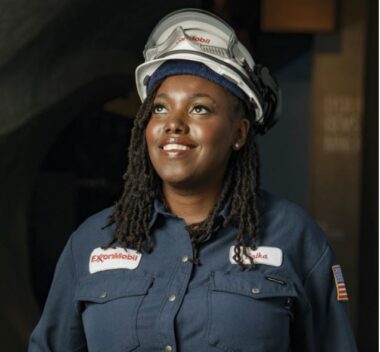 wanted to explore after high school. She searched online, looking for careers for people who liked math and science—and the first thing that came up was engineering.
wanted to explore after high school. She searched online, looking for careers for people who liked math and science—and the first thing that came up was engineering.
- “It was all about people who like a challenge; people who are lifelong learners,” said Anderson. “And as I kept reading, I kept hearing myself in this description. People had always said, you’re smart, you should be a doctor or a lawyer. But nobody ever said engineer.”
Her journey: At Spelman College and the Georgia Institute of Technology, Anderson studied mathematics and mechanical engineering, respectively, while working for GE Aviation and NASA. But it was during a semester spent working at ExxonMobil that she found her passion.
- “ExxonMobil was challenging, and I absolutely loved it,” said Anderson. “I loved the boots, the hard hats, getting my hands dirty. I was able to go out into the field, see all the equipment. I was in awe. I fell in love with it.”
Her job: On her last day in the office during her program at ExxonMobil, the company offered Anderson a full-time job. Today, she’s in her eighth year, working as both the reliability engineer and the reliability coordinator in Baytown, Texas. For ExxonMobil, those are critical roles, tasked with ensuring that the company’s equipment keeps functioning as designed. The way Anderson explains it:
- “Your car comes with a manual and it tells you when you’re supposed to change your oil or rotate your tires. And someone has to figure out how long that oil or those tires can run. I’m not dealing with cars, but I’m dealing with heat exchangers, compressors and pumps. I ensure that this equipment works, that it works reliably, and that we’re making repairs at an interval that keeps your equipment working as it should.”
Making a difference: As a Black woman in manufacturing, Anderson is used to being different from the people around her. She has found herself confronting stereotypes and preconceived notions about who she is. It hasn’t always been easy, but she’s doing vital work—and ensuring that other young women have the opportunity to follow their passions.
An example to others: Anderson was recently recognized by The Manufacturing Institute, the workforce development and education partner of the NAM, as a 2021 STEP Award Emerging Leader. The award is presented to women leaders in science, technology, engineering and production careers who exemplify leadership within their companies and in manufacturing in general.
- She’s also been featured in a book called Everyday Superheroes: Women in Energy about women in different fields in the energy industry; a TV show on CBS highlighting women in STEM; and a project by The Smithsonian and IF/THEN to put up 120 3D-printed statues of women trailblazers in Washington, D.C.
Advice for others: Anderson is an advocate for other women who are considering a career in manufacturing. She encourages women to find mentors, build a network and, above all, be confident.
- “Self-doubt is real, and sometimes, we can be our own biggest critics,” said Anderson. “We have to understand that we are excellent. We are great. And at the end of the day, for any woman coming to this industry—if you’re even thinking about it—there’s something in you. If it were easy, everyone would be doing it.”
The last word: “My grandmother always told me: you’ve got to get comfortable with being uncomfortable. The only way things will change is by having more people like me in the room. We are just as capable as anyone else, and whatever preconceived notions that may exist, I am here to kick those doors down.”
“Innovativeness” Quotient Is Up, but Perception Work Remains, Survey Findings Show
Get the Latest News
Get involved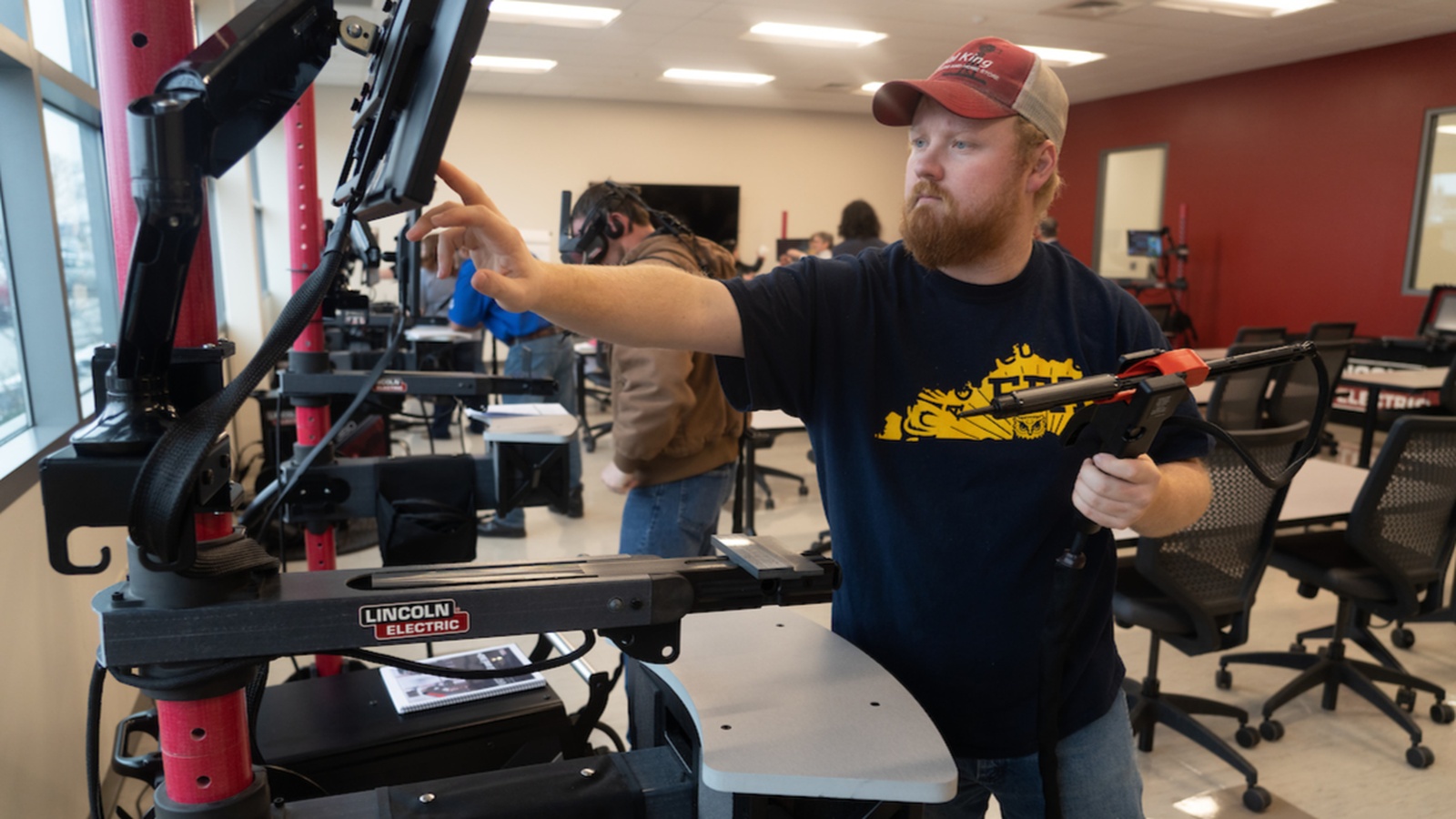
Big gains have been made in recent years in the public’s perception of manufacturing as an innovative industry, but awareness of the sector’s many positives lags, with its labor shortage a continued concern for business leaders, according to a joint Deloitte–MI survey out today.
Key findings: Among the most notable highlights from the study, “Competing for talent: Recasting perceptions of manufacturing,” are the following data points:
- Sixty-four percent of consumers surveyed see manufacturing as innovative, a 25% gain from the 39% reported by respondents in 2017.
- Most workers still prefer employment in other sectors, such as retail and services, to manufacturing.
Why it matters: “U.S. manufacturing is at an inflection point: The sector is increasingly viewed as crucial to economic and pandemic recovery, yet outdated public perceptions could be impacting recruitment of vital new workers,” according to the Deloitte–MI news release.
- A continued shortage of manufacturing workers could stymie economic growth and manufacturing competitiveness.
Bright spots: There were several positive takeaways from the findings, however.
- Eighty percent of people surveyed said they might be interested in jobs “with enhanced training and clear career paths,” according to the release.
- The COVID-19 pandemic opened the public’s eyes to the criticality of the manufacturing sector, as it produced much-needed PPE and ventilators.
- Eighty-four percent of manufacturing executive respondents believe their companies are effectively fostering an equitable and inclusive work environment.
The last word: “Manufacturers are working hard to fill open jobs and connect more Americans with rewarding careers, including through efforts like Creators Wanted, the industry’s largest campaign to build the workforce of tomorrow,” said MI President Carolyn Lee.
“As an industry, we are focused on continuing to improve perceptions, so that students, parents, educators and more understand the great opportunities available in modern manufacturing. With new or strengthened initiatives, companies can engage new employees, keep existing employees and bolster their reputations of providing sought-after careers in their communities.”
